1lumen selects and reviews products personally. We may earn affiliate commissions through our links, which help support our testing.
FireflyLite NOV-Mu V2 review
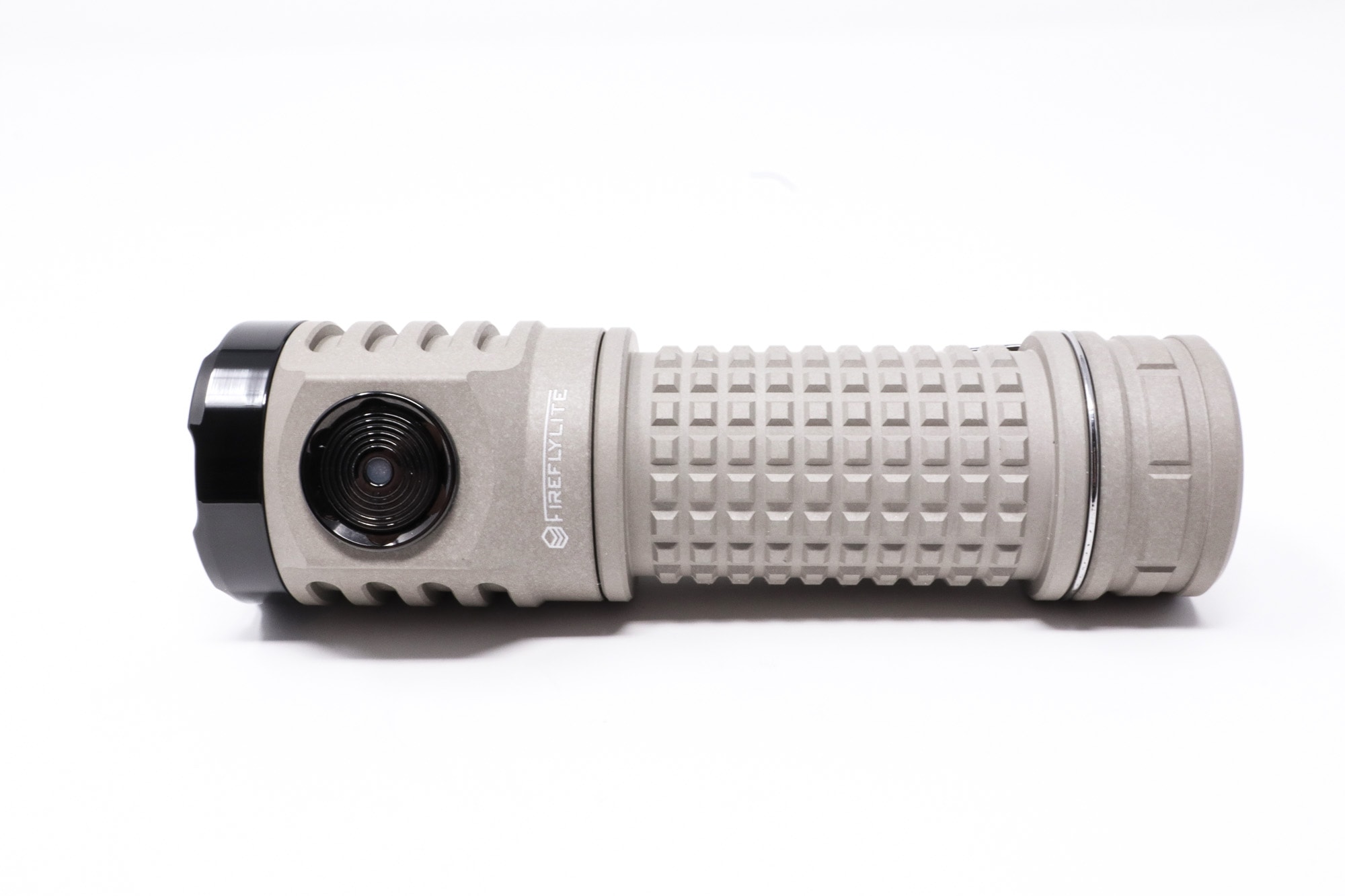
FireflyLite NOV-Mu V2 specifications
| Brand & Model | FireflyLite NOV-Mu V2 |
|---|---|
| Flashlight category | General Purpose / Photo Light |
| LED | 21 x Nichia E21A |
| Max. output | 6,000 lumens |
| Max. beam distance | 124 meters |
| Max. beam intensity | ? |
| Battery config. | 21700 |
| Onboard charging | USB-C |
| Main modes | Many, Anduril 2 |
| Blinkies | Many |
| Waterproof | IPX8 |
| Review publication date | February 2024 |
Review intro:
Another new light from FireflyLite Outdoors, so a huge thanks from Jack and Ivy for sending this one (and the others!). I went over a lot of the particulars of these lights in the E07X intro, but in a nutshell, FireflyLite has emerged from the ashes of the pandemic with new versions of their best-sellers. Among which is a new NOV-Mu, the V2, which has been my honored guest for the last week. I liked the PL09MU when I tested it. It was super handy, bright, and the color rendering and tint were amazing. I still use it a lot to this day, and with a diffuser it’s even more handy.
Let’s see if this new one can usurp my beloved PL09MU (spoiler alert…it did!). This NOV-Mu V2 is a carryover from the first NOV-Mu, which was roughly designed after the E07X Pro (same electronics, similar host). This one’s had some design changes, but everything else’s the same. Let’s take a look.
What’s in the package
Like the other new lights, the NOV-Mu V2 occupies the upper-end of FireflyLite ’s product line, so I was surprised to see a pretty ordinary box. Nothing special. Inside, the flashlight and accessories were riding in foam.
- FireflyLite NOV-Mu V2
- VapCell T50 5000 mAh 21700
- 4 o-rings
- Instruction manual for Anduril 2
- Lanyard
- Spare lens
I was surprised to see a spare lens in the box. A nice touch for sure. The test light included a battery, the VapCell T50, but it’s an optional add-on. It was sitting at nearly 4.1 volts, so great for high output out of the box, but not long-term storage. The lanyard is a Slinky-like deal, a coiled up plastic thing.
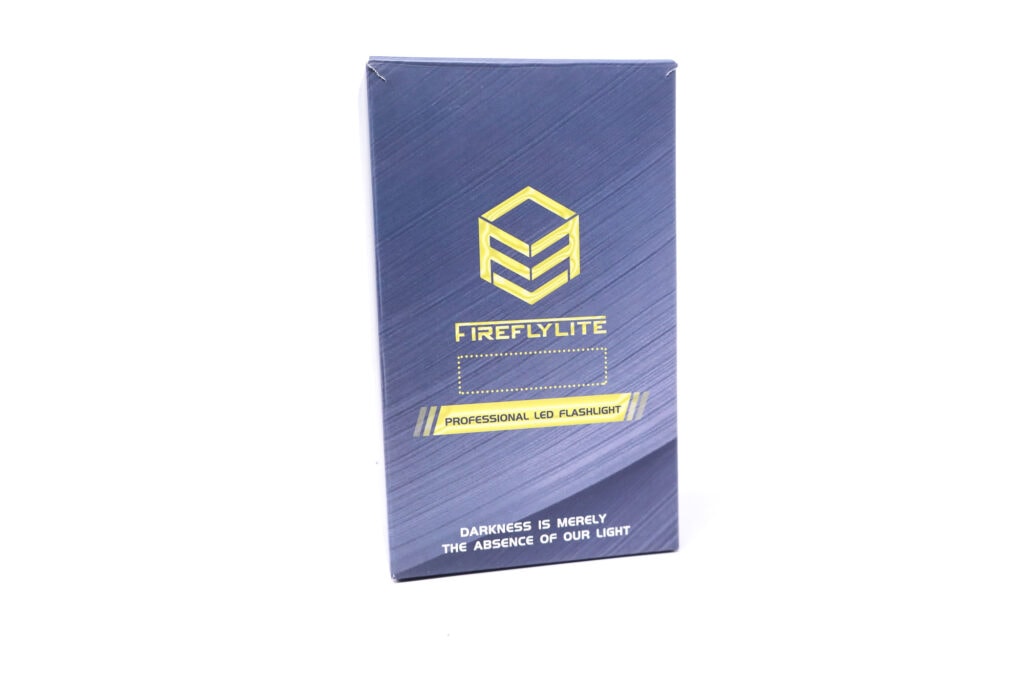
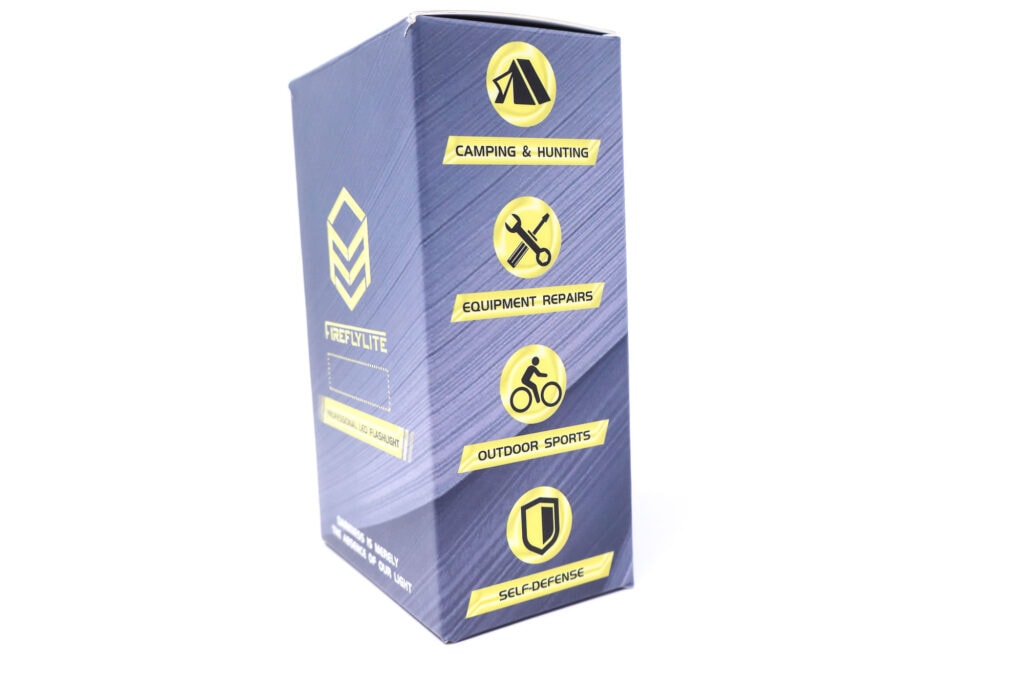
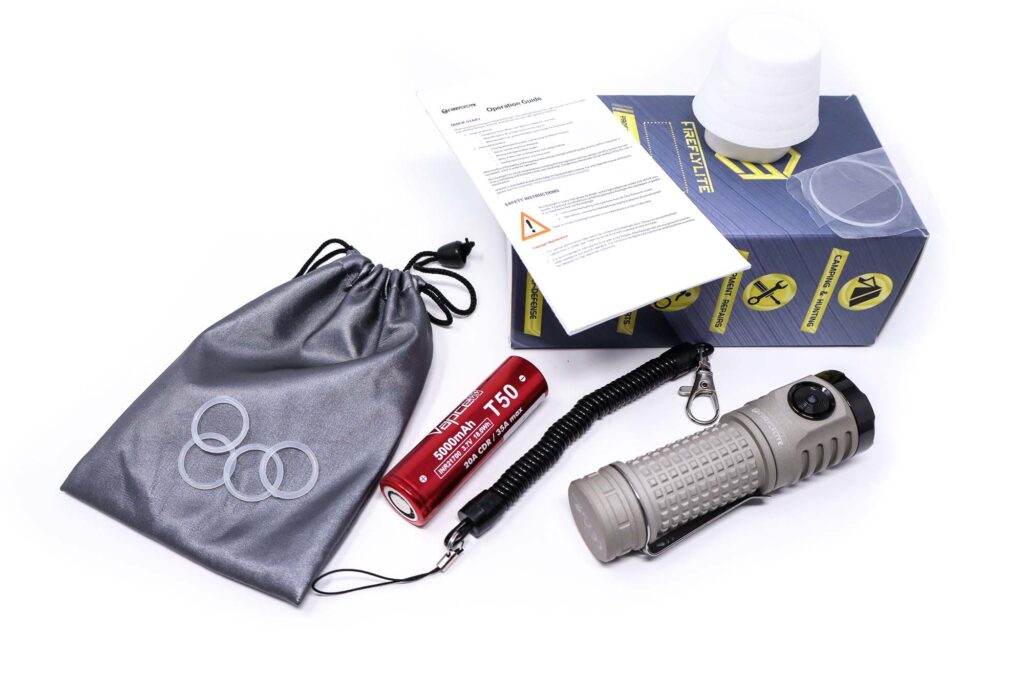
Flashlight in use, Build Quality, and Warranty
The FireflyLite NOV-Mu V2 is a compact, pocketable mule (a flashlight sans optics/reflector for those curious). A mule can be really useful for jobs other than plowing fields and pulling carts. You’d use these as area lights or for floodlighting. While you could use it as a worklight, I don’t know if I’d do that since it’s almost too pretty to rough up. The handling is great and it’s nicely balanced.
I thought the lack of optics would be detrimental, but not at all: There was enough flood and beam distance to be very useful, and with the included silicone diffuser, it became a pretty impressive lantern. The aggressive hand grenade texture on the tubes made for an excellent gripping surface. For pocket carry, it’s feasible and doable. It’s lightweight enough and small enough that it’s not obtrusive-aout the same size as a Wurkkos TS25.
For switching, there’s a single e-switch mounted in the middle of the head. It’s been redesigned from the first NOV-Mu, which borrowed it from the E07X Pro. This one’s very nice. I had no trouble reaching it from all grip angles. It has a PVD (FireflyLite calls it diamond black VEP) black stainless steel button with a central LED indicator for on-state and charging. This is a slight carryover from the first NOV-Mu, which has a shiny stainless button.
The switch LED is configurable through the UI, along with the front RGB aux LEDs mounted to the MCPCB. The click action is very good, with slightly soft, but positive clicks with good feedback and feel. The USB C charging port cover is also stainless VEP coated in the same black color. The charge port is a brand new and patented design with a magnetic closure, and according to FireflyLite , it’s fully waterproof even when the port is open.
The pocket clip design is unchanged from the prior NOV-Mu. It’s a captured design retained by the tailcap. It’s not reversible, but has nice spring tension to it and grips really well. They’ve also added the Fireflylite logo at the root of the clip. It looks stamped or laser cut and is a nice touch! There’s no lanyard holes or mounting points on the host, but there’s a spot on the pocket clip to attach it.
Build quality: I’m happy to report zero issues with build quality, fit, or finish. This feels like a solid, high quality item. What will it set you back? As of today (with a 25% discount), the base light comes in at $96 US. Adding a battery and extra magnetic tailcap bumps it to $113 US, and I don’t think that’s a bad deal for what you get. I expect the price will go up, so get these while you can since they’ll sell out quicker than Gene Simmons with a product endorsement deal. The light is milled from 6063 aluminum alloy, not the typical 6061. This is good because 6063 takes a nicer surface finish, is more corrosion resistant, tougher, and has better electrical and thermal properties.
The machining is exquisite, with no anomalies, plus there’s no abrupt edges anywhere since it’s been given the ‘carry melt’ treatment. The finish is also new. You get a choice of two MOA (micro arc anodizing) finishes including fossil gray and dark white, and a standard matte black type III HA finish. The test light came in the fossil gray MAO and it’s really nice! More brown than gray or white, and a nice departure from brown shades.
The light can be fully disassembled, which is nice if you want to mod it further or just do your own maintenance, but honestly, there’s not a whole lot to mod on here, so best to leave it alone. Even though the threads were somewhat lubed, the o-rings were drier than a thespian’s jones, and like the E07X and X1S, unscrewing the tailcap and the head took some effort. The first 3 turns go pretty smooth, but the last 2 turns require what seems like excessive amounts of force to fully tighten them. I added more lube to the o-rings, and it helped, but it still took more effort than I like.
The threads are fully anodized T-shape (more like rectangular) and they’re very precisely cut and relatively smooth out of the box, but more lube helps that. There’s o-rings sealing every joint as well: Both ends of the tube, bezel, and the lens. The IP rating has been upgraded to IPX8, up from IP66. For springs, you get a driver spring and a tailcap spring. They’re nonmagnetic copper alloy with a silver plating, and plenty thick for good current handling.
For the warranty, I couldn’t find anything on the FireflyLite website, but their old website, ff-light.com, does list warranty information, so take it away FF-light! We provide 3 years’ manufactory warranty to fireflies flashlights. (Consumable batteries are not in warranty. ) DOA products can be returned and refunded within 15 days, We will bear all the returning shipping cost.
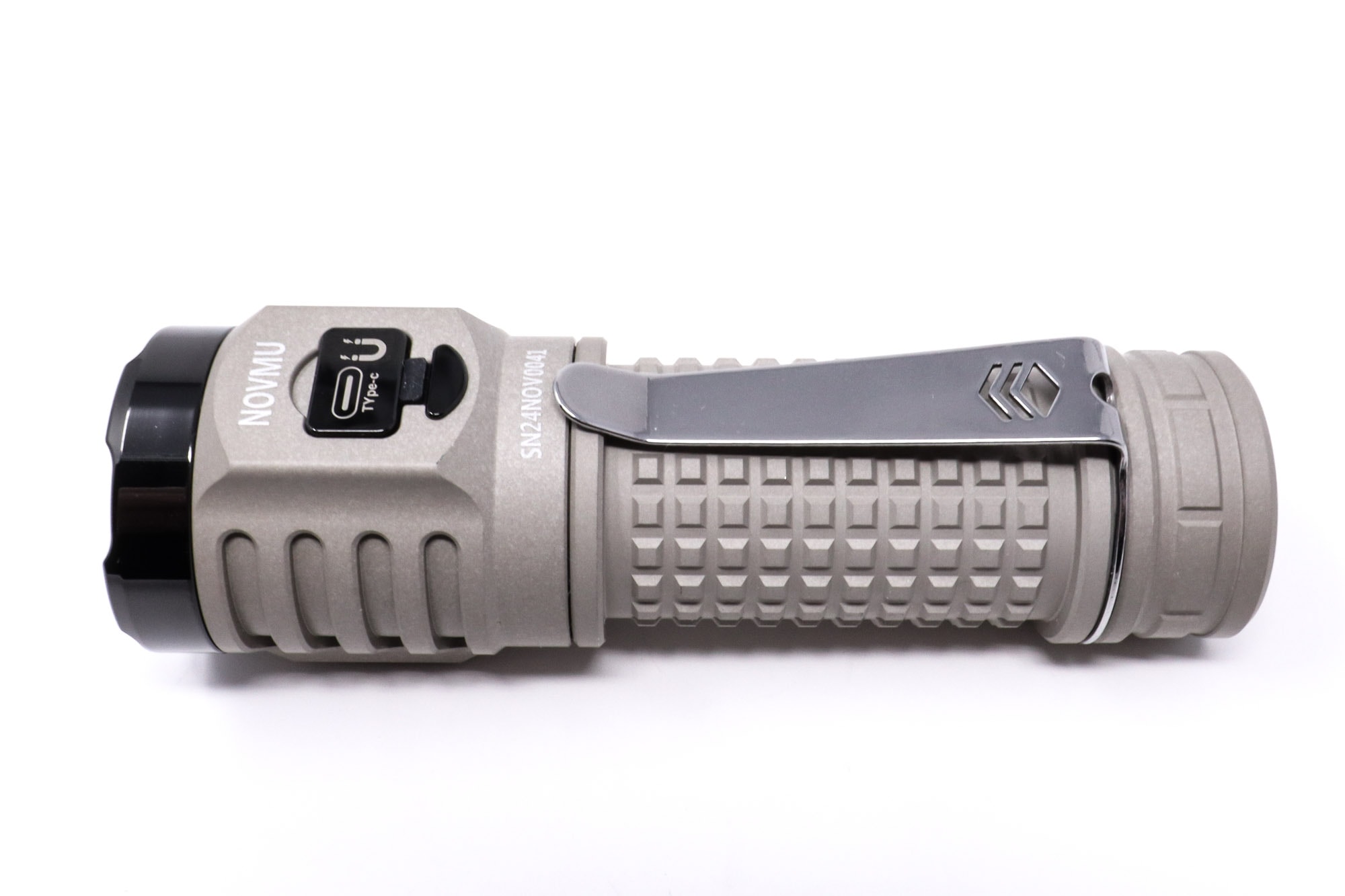
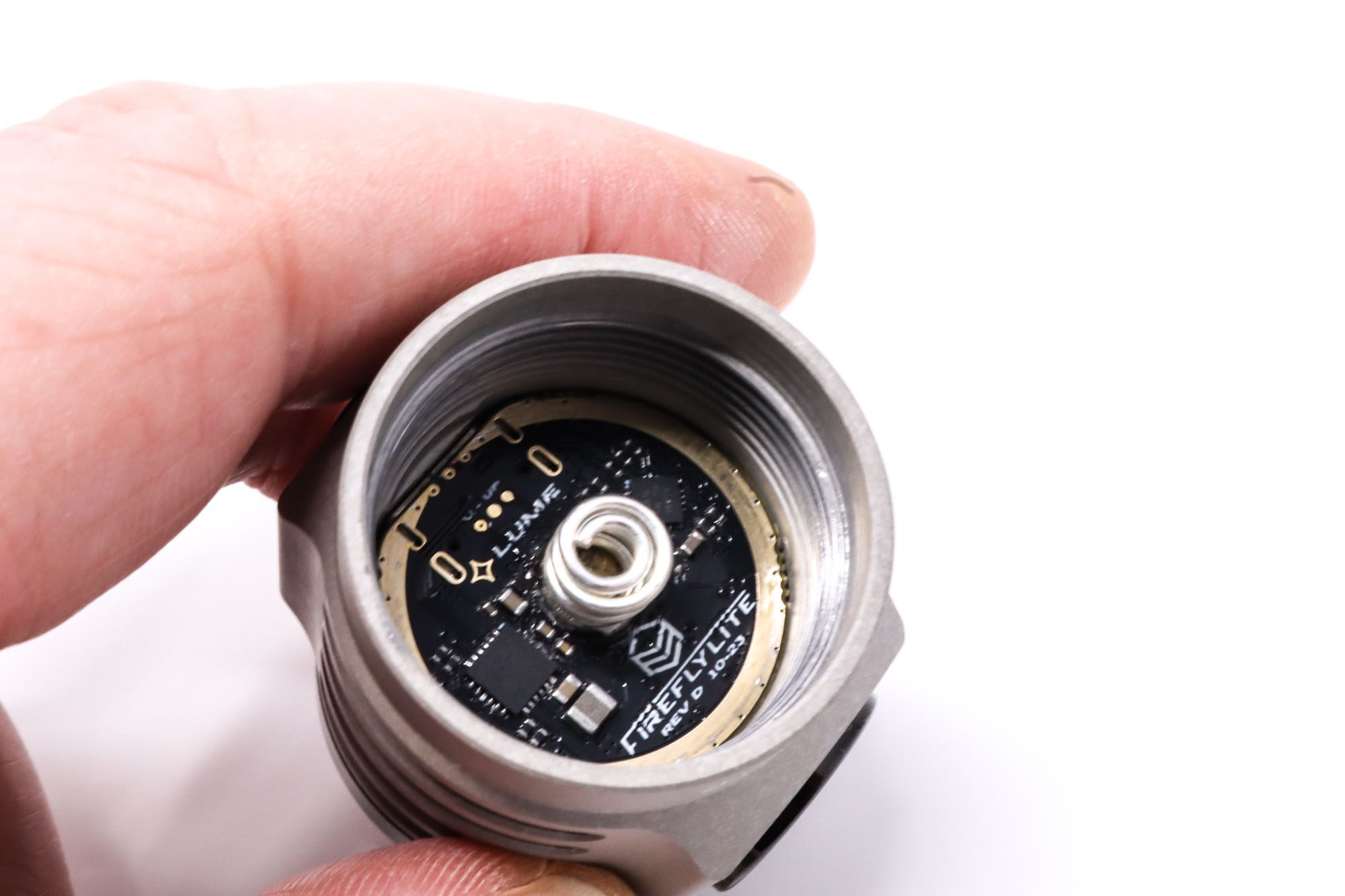
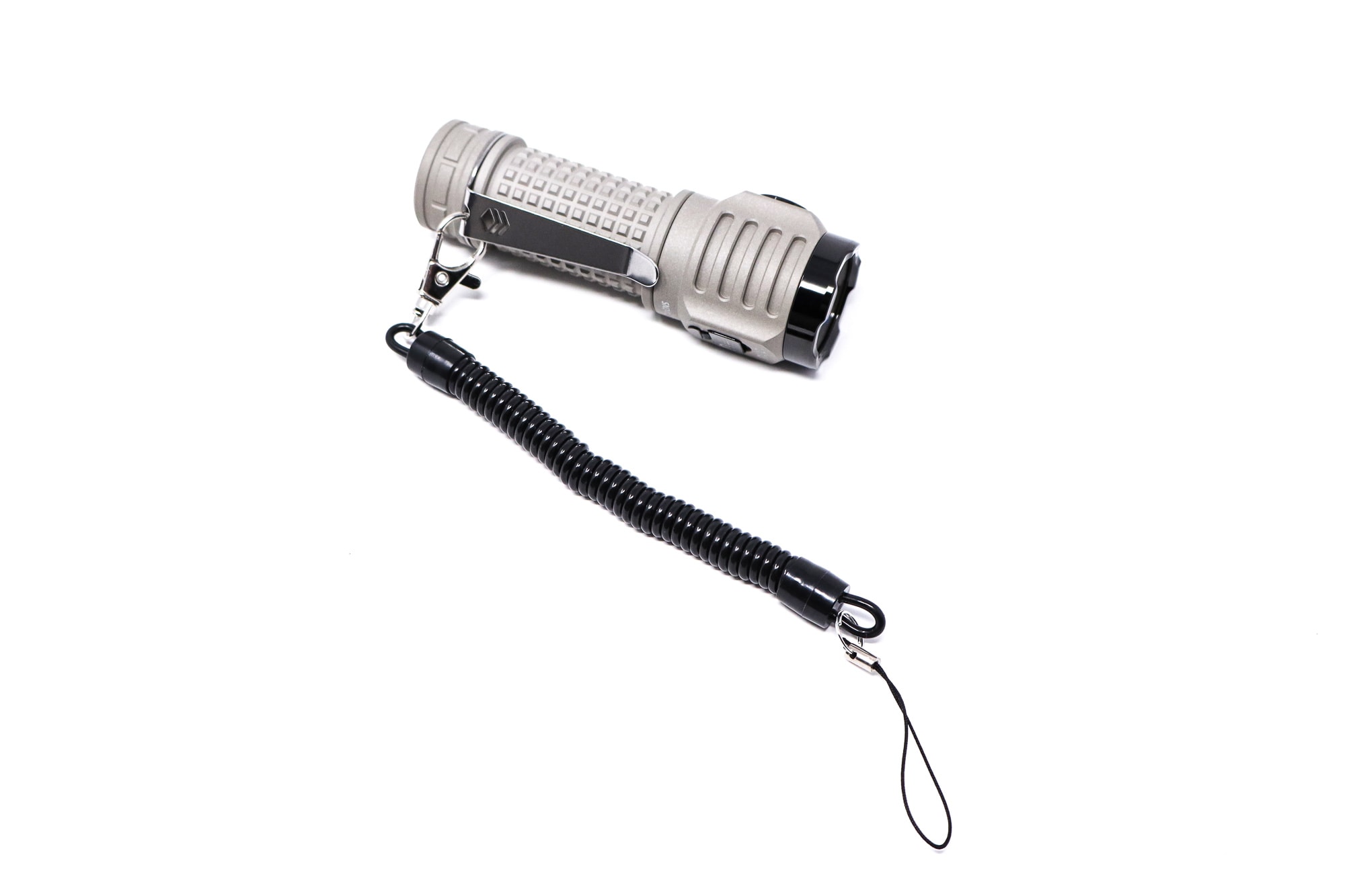
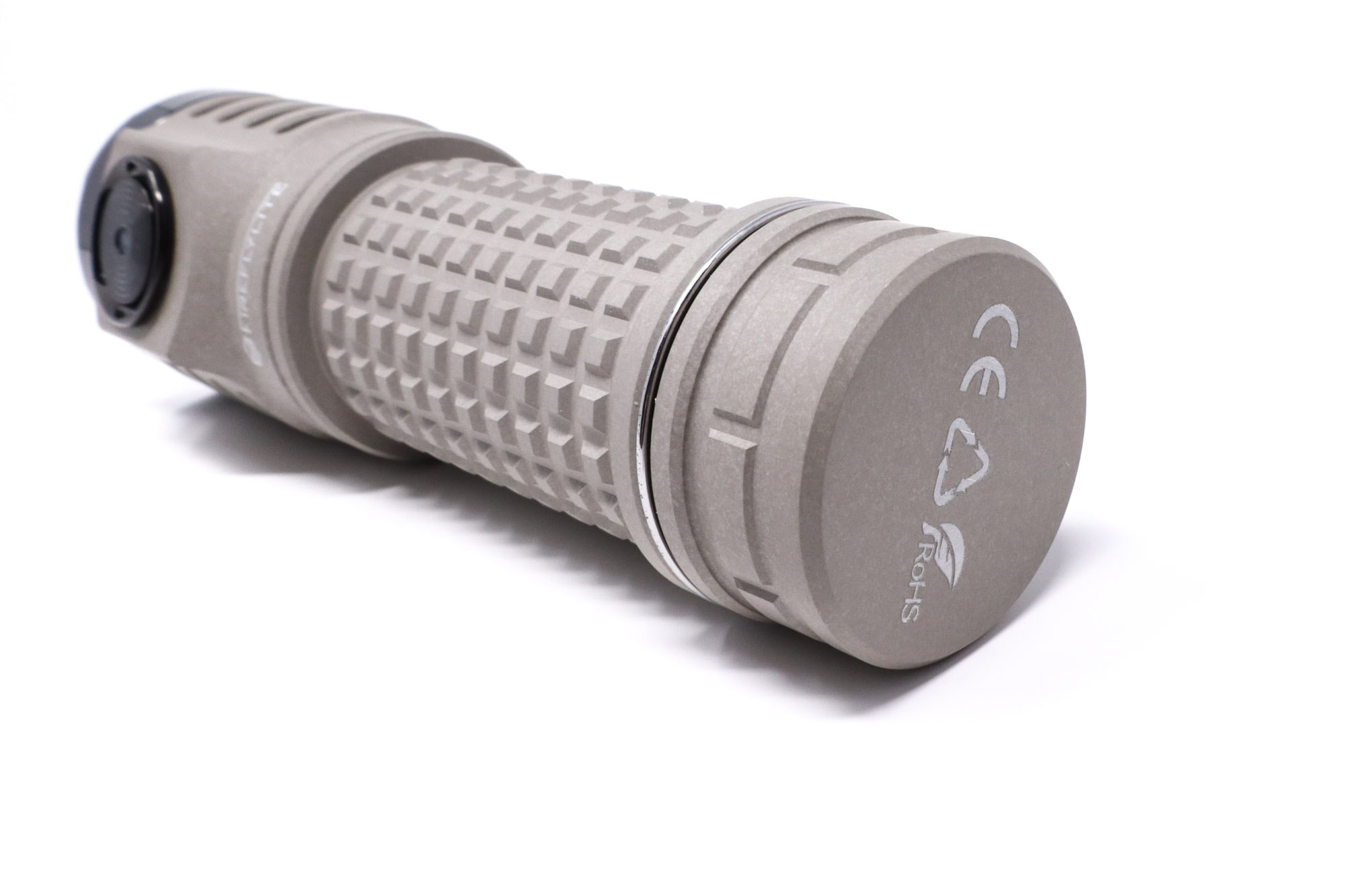
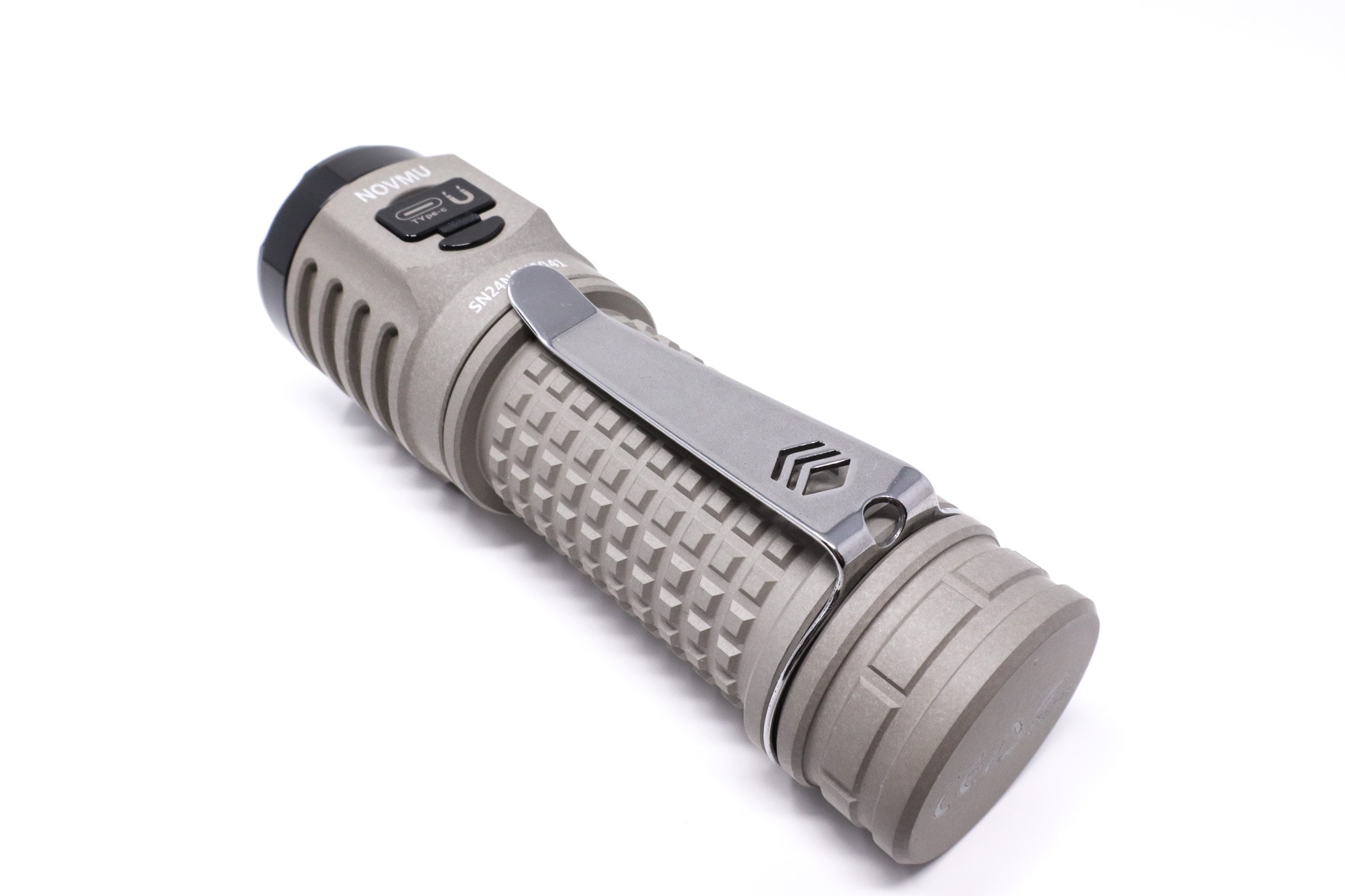
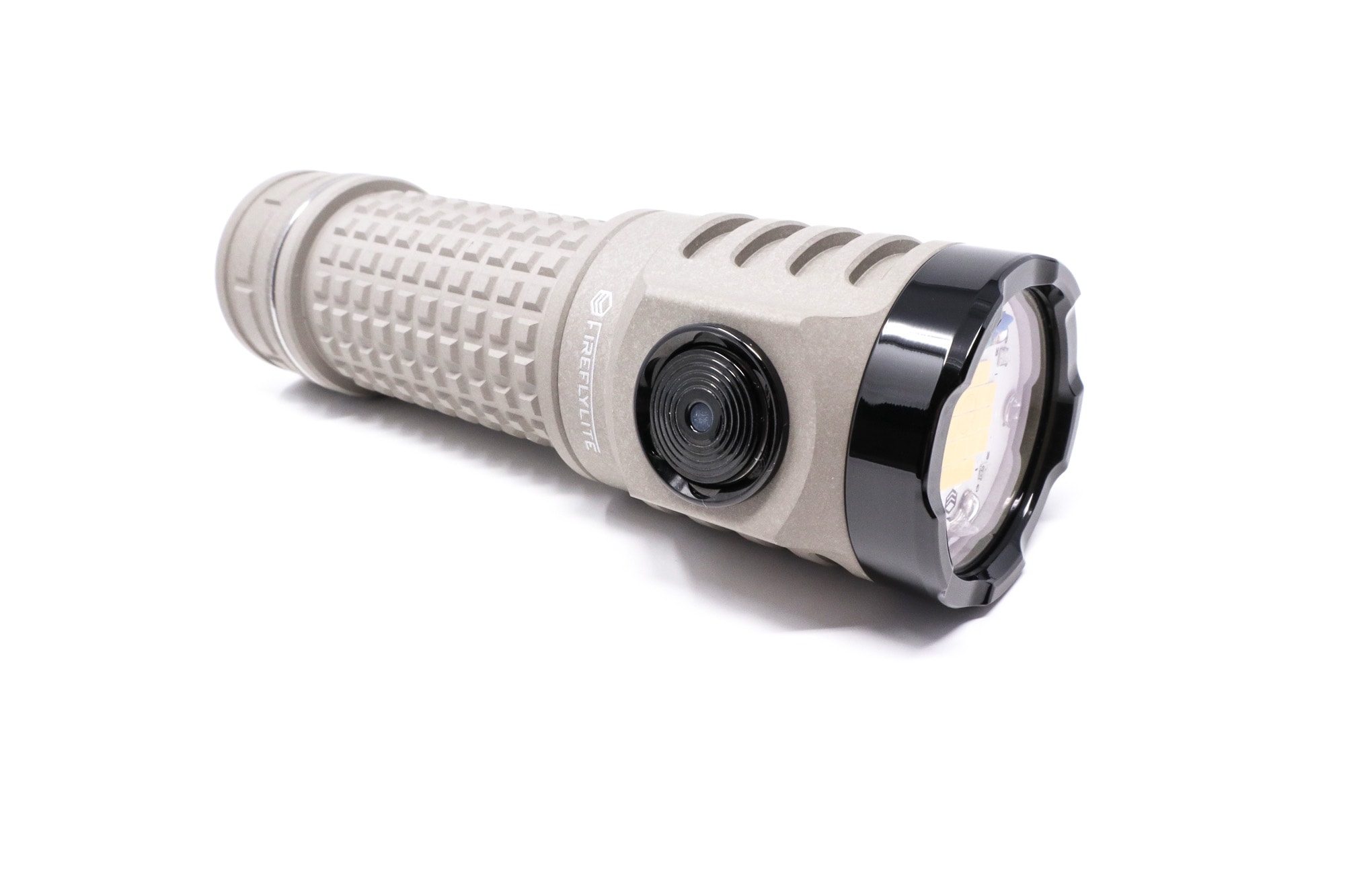
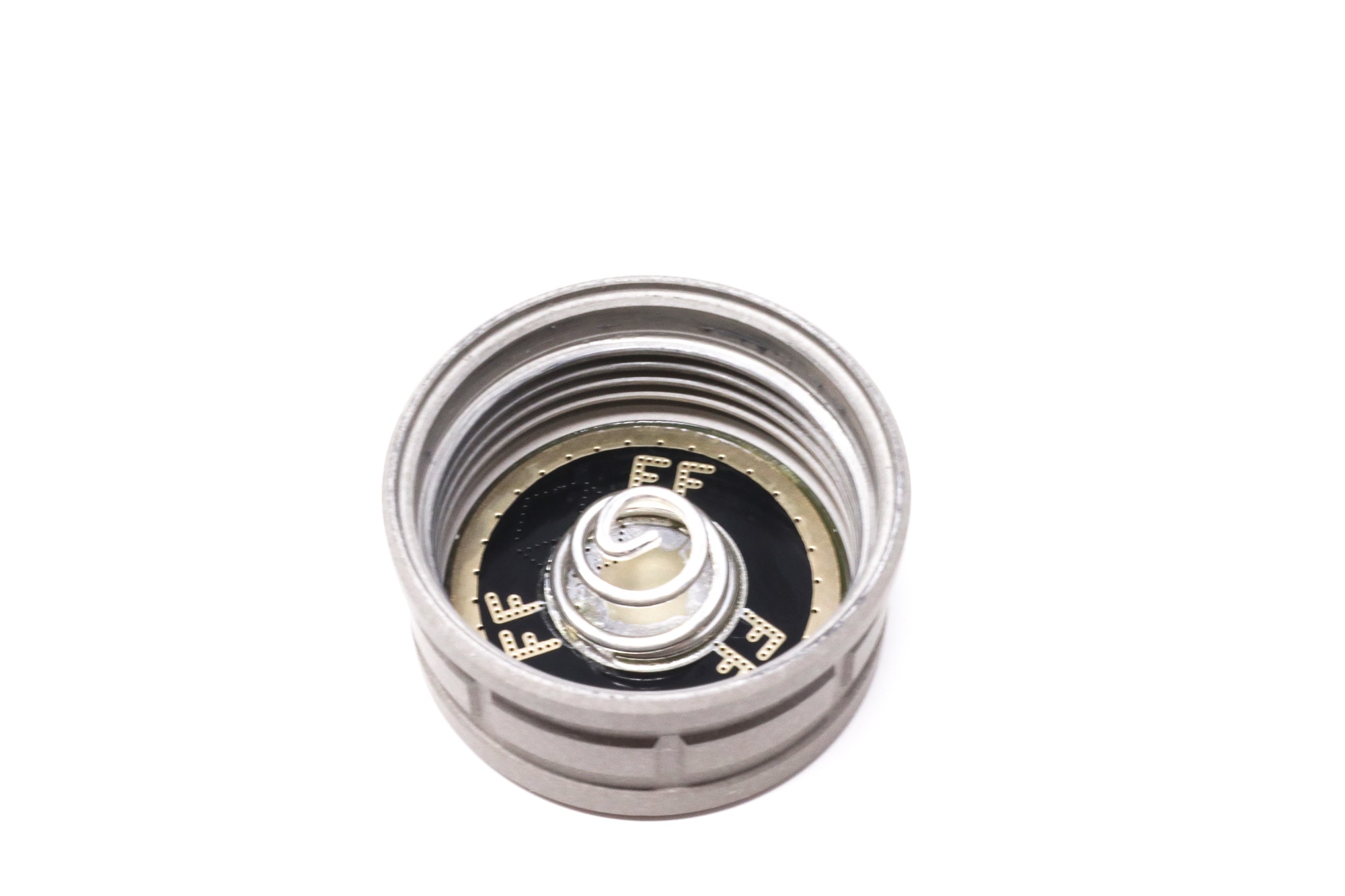
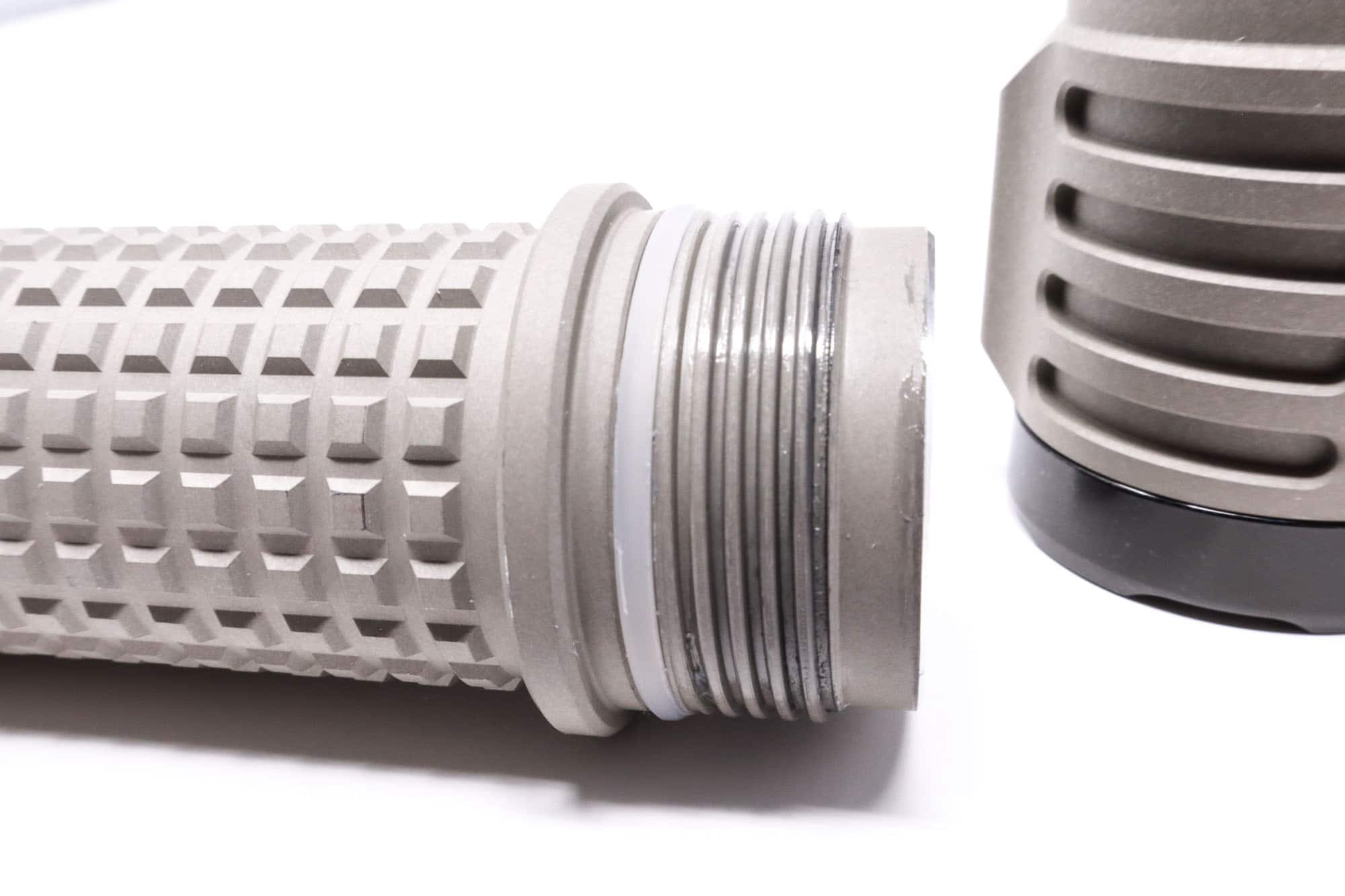
LED, Lens, Bezel, Beam, and Reflector
The FireflyLite NOV-Mu V2 has 21 Nichia E21a LEDs grouped together on the MCPCB. These are pretty unique LEDs usually found only in Noctigon and Emisar products. They’re domeless, 3 volt CSP type emitters with a 2.1 x 2.1 mm footprint. Since there’s no thermal pad, you can’t mount them to a DTP board, so they can’t be overdriven. While a single E21a is pretty unimpressive output wise, when grouped together you can get reasonably high output.
However, the real reason these are here is their beautiful tint and accurate color rendering. The NOV-Mu V2 comes with the 4500K R9080 98 CRI variety of the E21a LED, and as expected, the beam is very muel-y (is that even a word?), with a huge wall of evenly distributed high CRI light. It’s perfect for illuminating large areas, photography, and it could even be used for inspections or color matching for painting. Even without an optic, there’s enough beam distance to be useful for most lighting tasks, but expect even a cheap 14500 single LED light to have better beam distance in real world use. The bezel is a beautiful VEP (aka PVD) coated black stainless unit and it’s topped by a dual-layer AR coated mineral glass lens. The bezel does offer some protection to the lens, but not much.
Spectral measurements:
I used an Opple Lightmaster Pro to measure the flashlight at 1 meters from the sensor
| Mode: | CCT: | CRI Ra: | duv |
|---|---|---|---|
| Turbo | 4586K | 97.1 | -0.0102 |
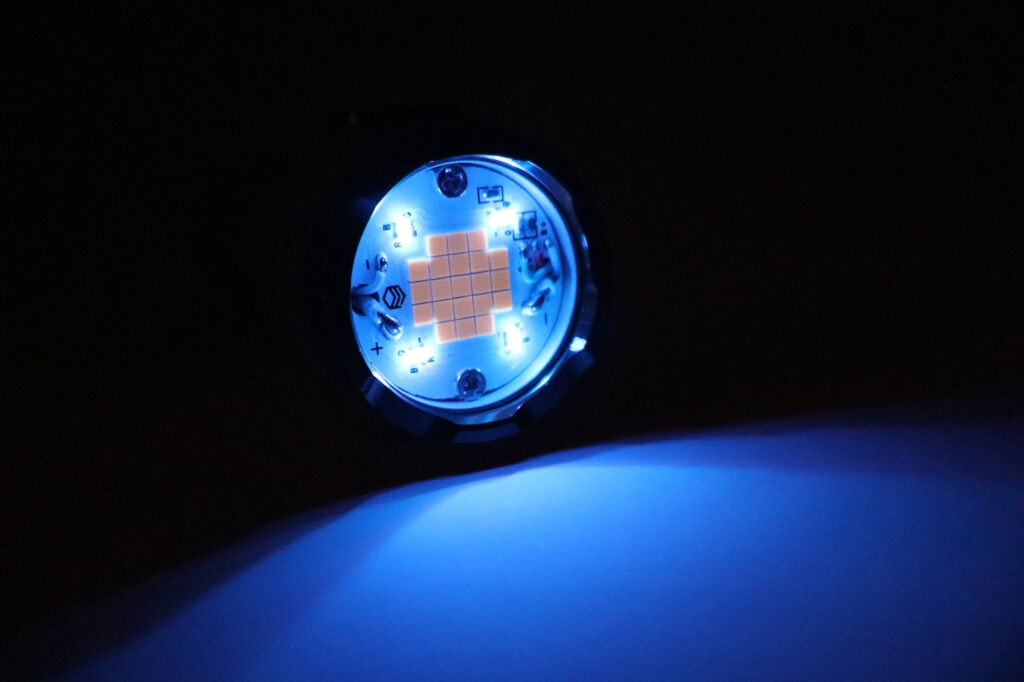
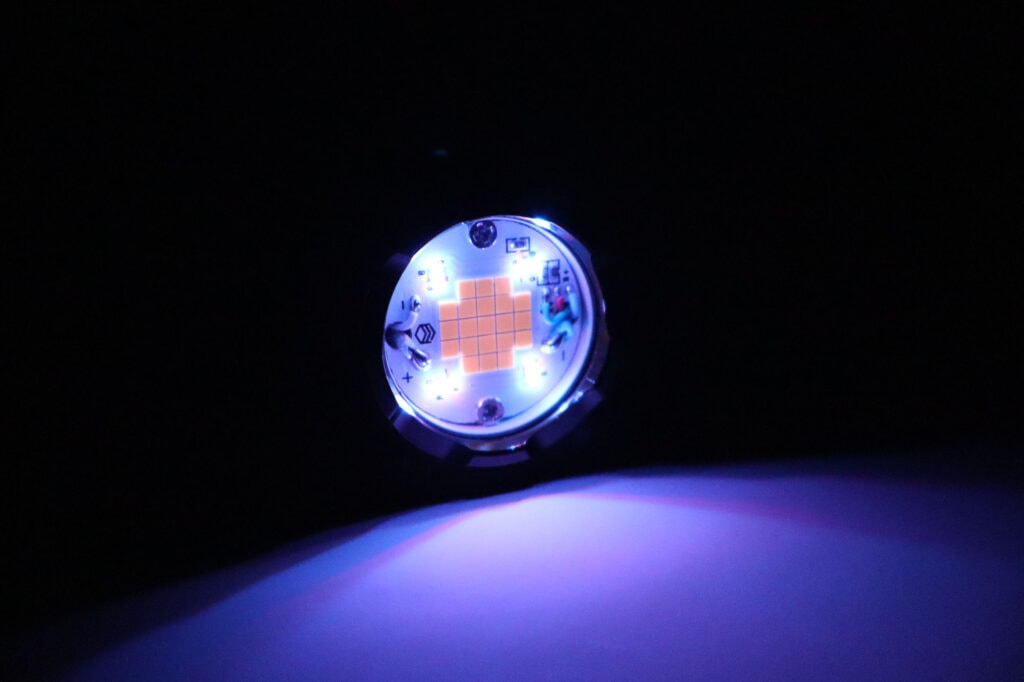
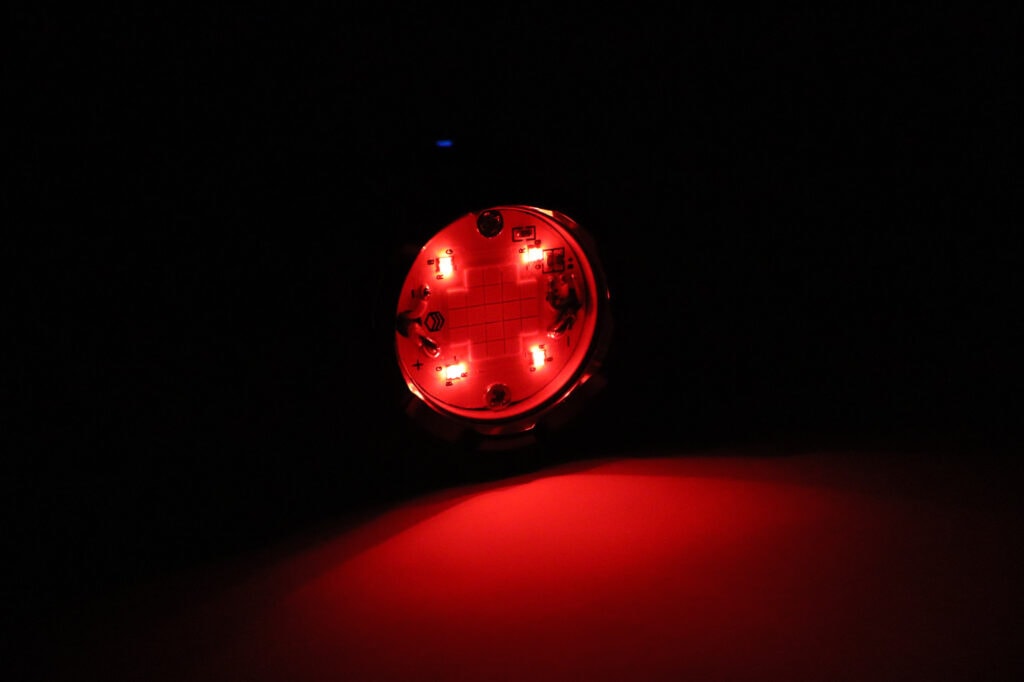
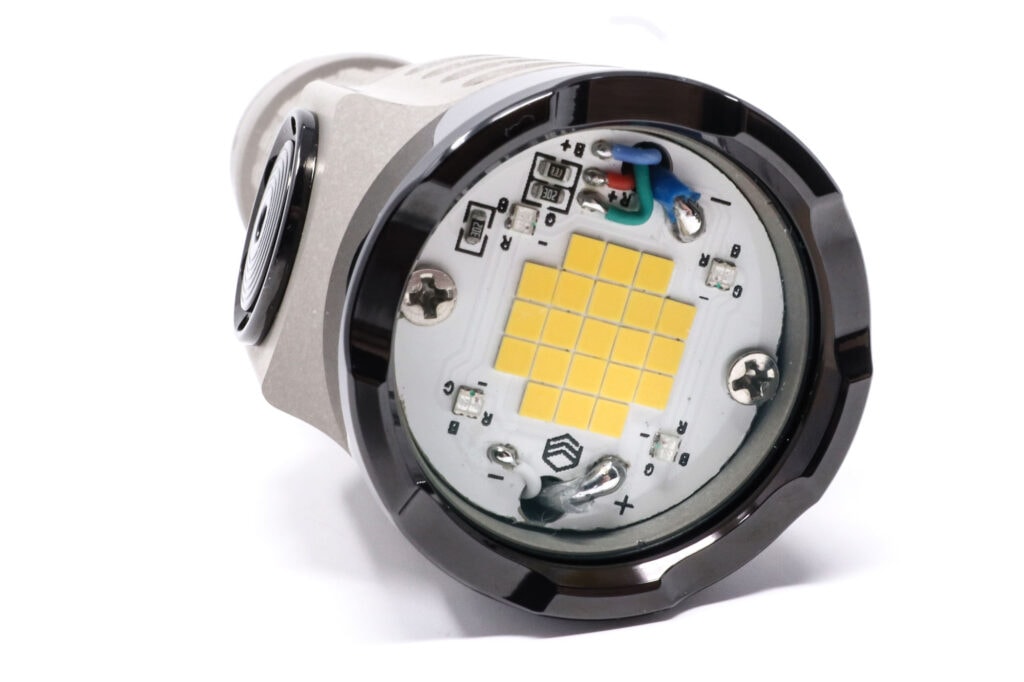
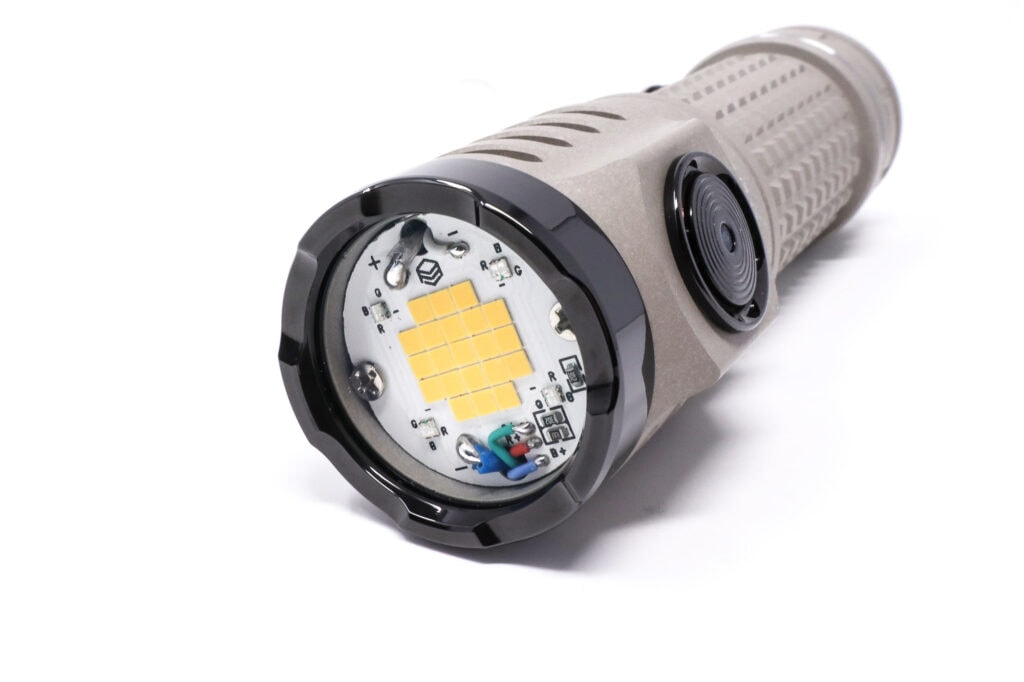
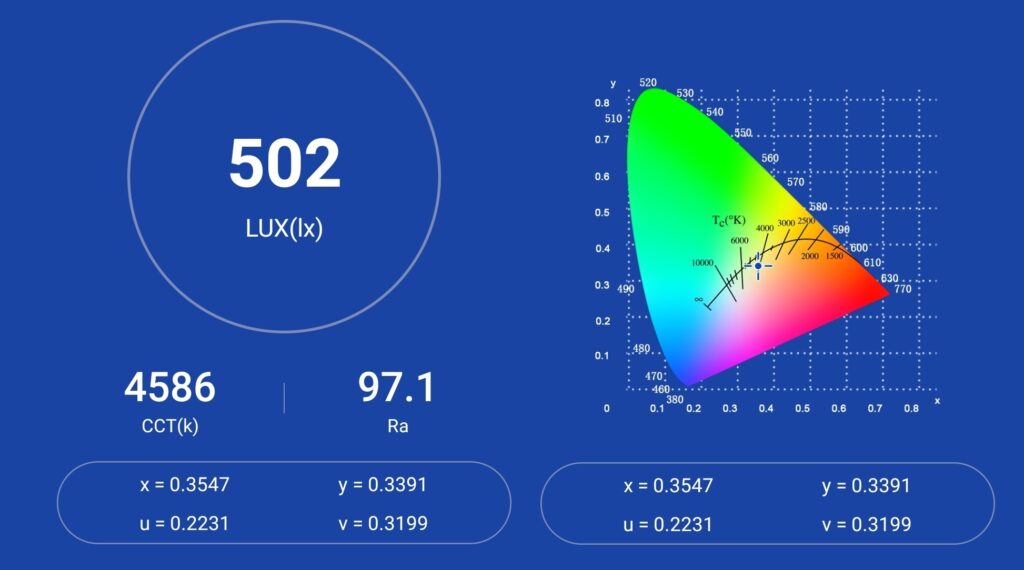
Dimensions and its competition
The V2 of the NOV-Mu has shrunk a big. It’s shorter than the first version by about 7 mm. That makes a difference, and it makes it more pocketable. Other dimensions are unchanged.
Dimensions:
| FireflyLite Nov Mu v2 | Millimeters | Inches |
|---|---|---|
| Length | 107 mm | 4.2 in |
| Head diameter | 32 mm | 1.2 in |
| Body diameter | 26.5 mm | 1 in |
Dimensions are rounded to the nearest millimeter and the nearest tenth of an Inch.
Weight:
| FireflyLite Nov Mu v2 | Weight in grams | Weight in oz |
|---|---|---|
| Without battery | 103 g | 3.7 oz |
| With battery | 174 g | 6 oz |
Weight is rounded to the nearest gram and tenth of an Oz.
Flashlight size comparison with its competition:
Group 1: FireflyLite NOV-Mu V2, Fireflies PL09 Mu, Emisar D1 V2, Thorfire C8, Acebeam E75
Group 2 with diffusers: Fireflies PL09 MU, Mateminco MT-911, Manker E14 IV, FireflyLite NOV-Mu V2
Group 3: Fireflies PL09mu, FireflyLite Nove-Mu v2
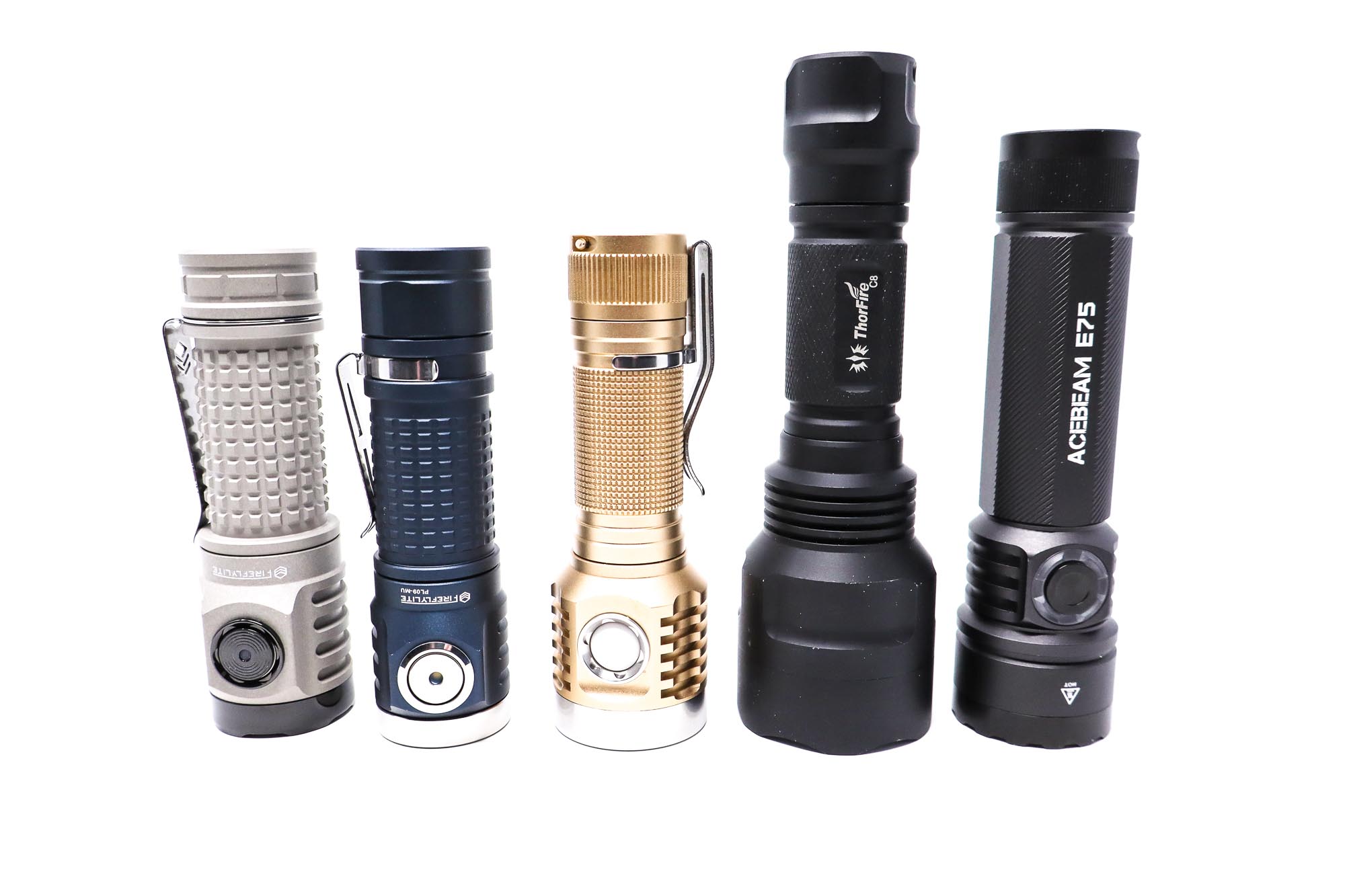
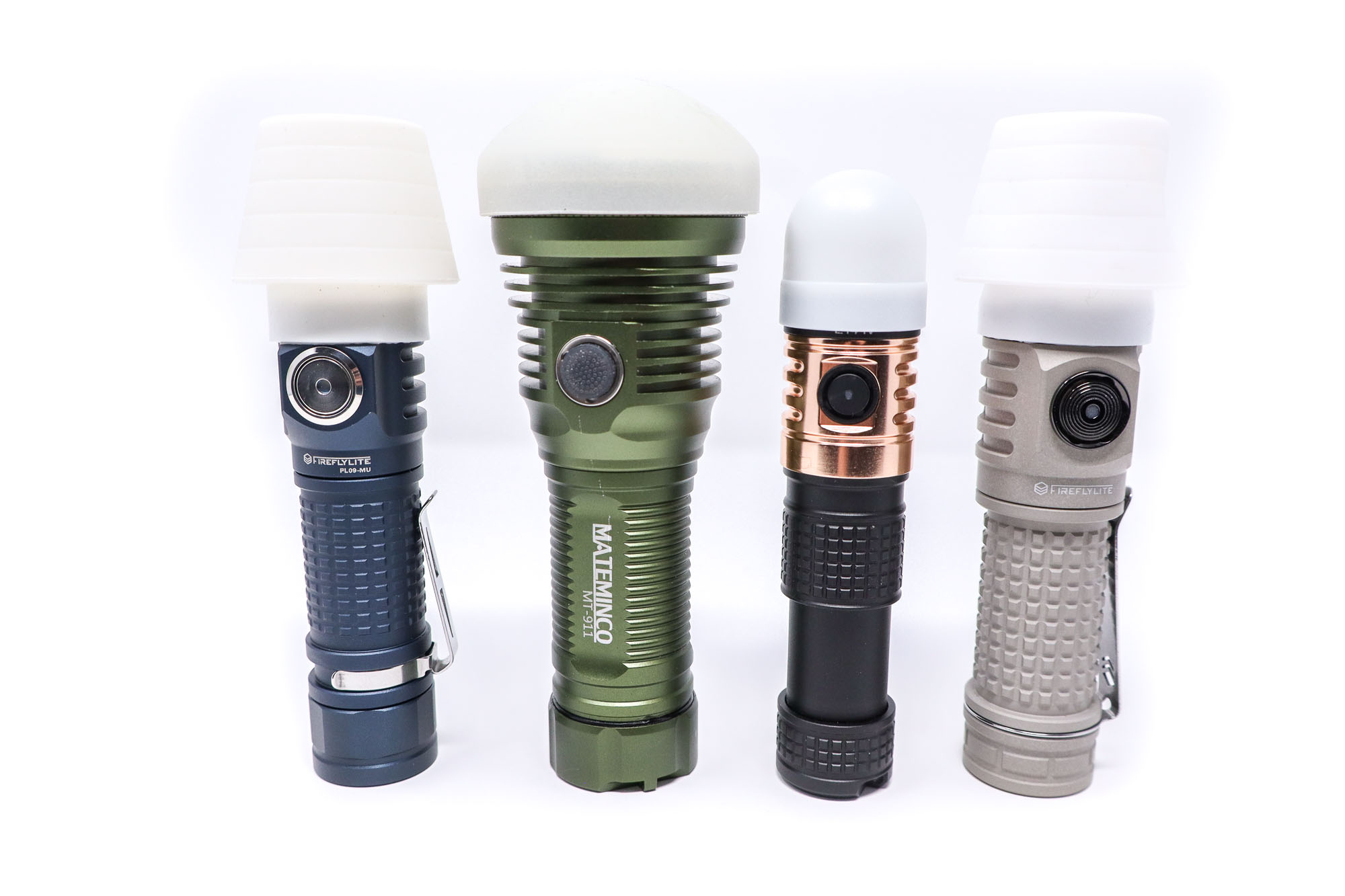
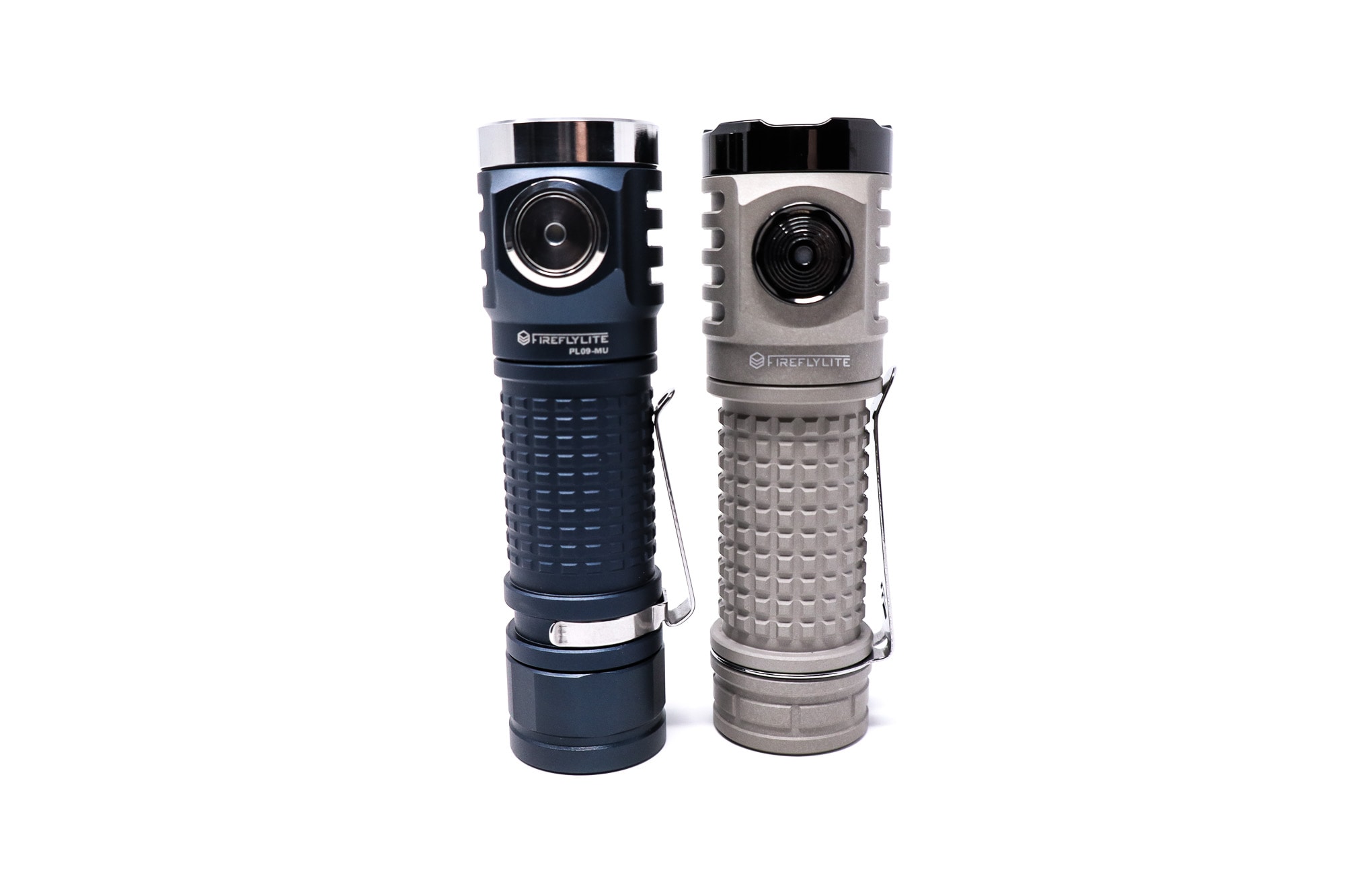
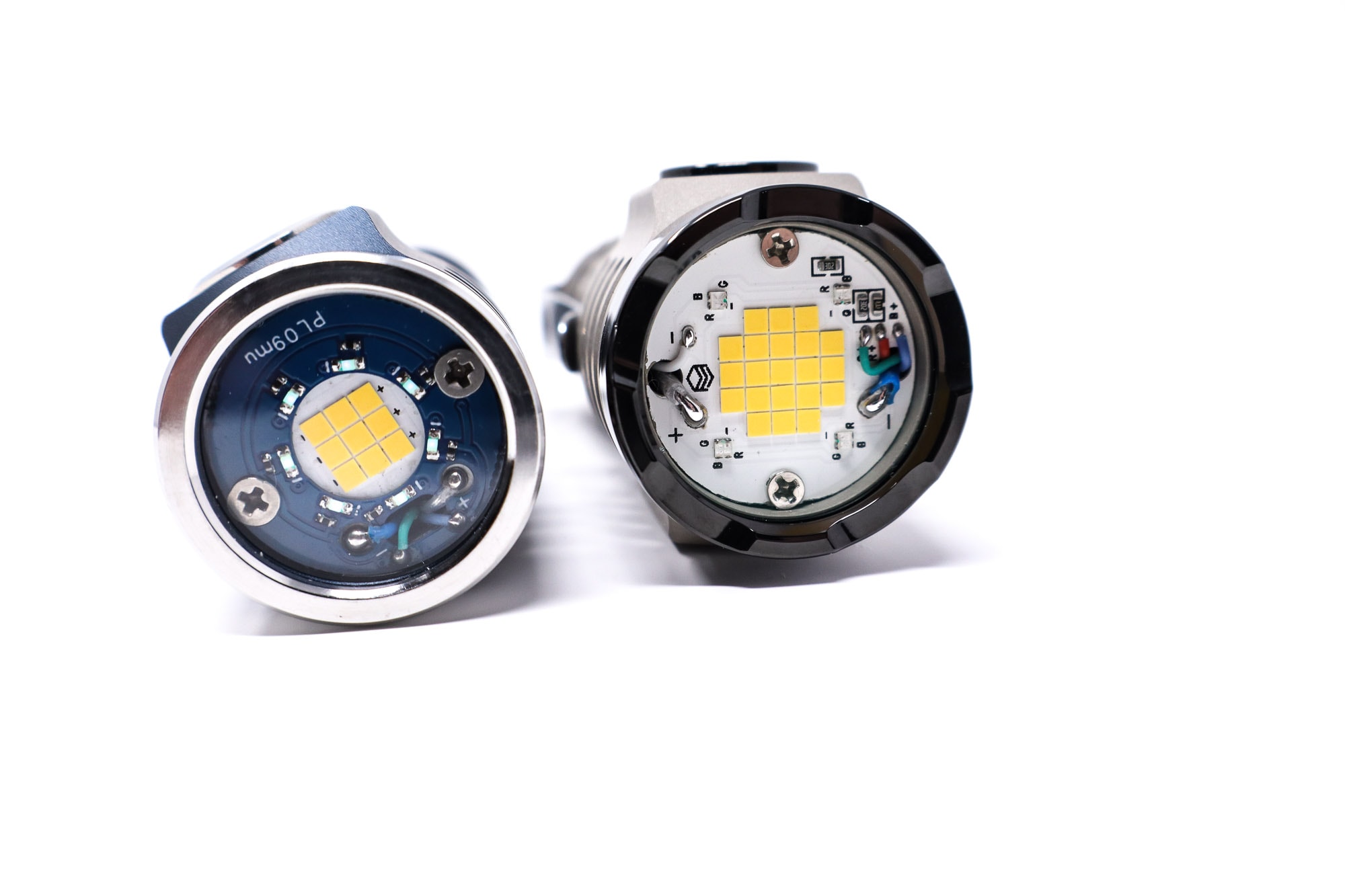
FireflyLite NOV-Mu V2 UI: User Interface and Driver
Returning for driver duty in the NOV-Mu V2 is none other than the Lume1. It was designed by Loneoceans as an Attiny1616-based driver with 6A buck+FET for 3 volt LEDs. It’s supposedly been updated in this light, with an efficiency bump. You’d get up to 6 amps fully regulated output and direct drive FET for Turbo. This is great for Anduril lights where the max ramp brightness could be regulated up to 6 amps, which can give higher sustained outputs (within thermal tolerance though).
The UI is carried forward from the original. It’s ToyKeeper’s Anduril 2 and needs no introduction other than it’s pretty much the most advanced, full featured (and complicated) flashlight UI in the world. This version of Anduril 2 is the newest one, with the options for tint mixing on multiple channels, and a unique ‘soft start’ feature when turning on/off and changing modes in the stepped ramping. It took me a minute to get used to that, but I like it.
Anduril 2 User Interface
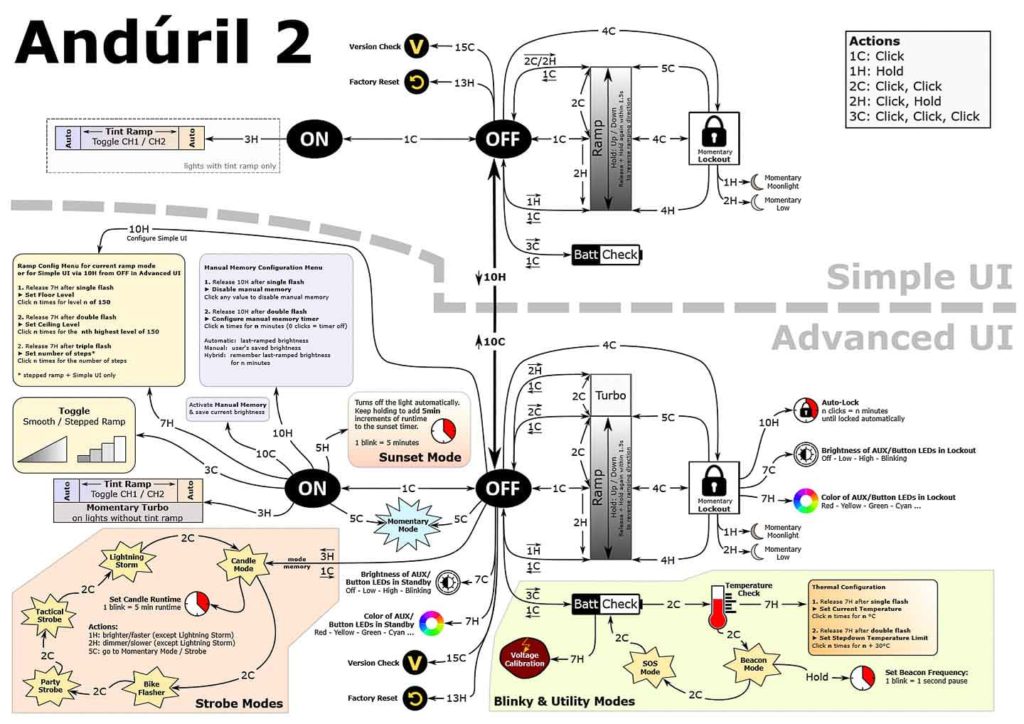
Here is another Anduril 2 image.
And by default, it uses the Simple UI… and here is the UI diagram:
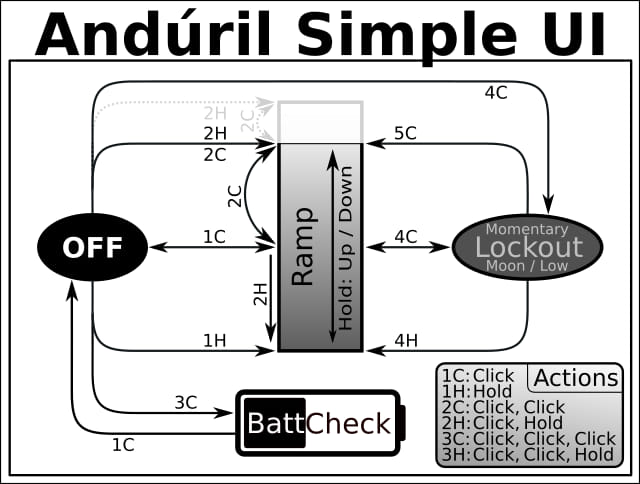
Anduril2 has two UI’s available: Simple and Advanced. The light came with the Simple UI enabled, and I think it’s kind of a misnomer because it’s still a little complicated for a first-time user. However, those familiar with the original will pick it up pretty quickly. Simple UI is missing some of the familiar features present in the original, namely the special blinky modes, temp check, and thermal configuration (those are present in the Advanced UI), and there’s no “muggle” mode either. You still get access to smooth ramping (stepped is, you guessed it, only available in Advanced UI), lockout, momentary high, battery check, and some useful lock/unlock modes.
The Advanced UI is appropriately named because it’s, well, advanced and there’s a plethora of options and configurations available. There’s probably way more features than the average user would ever dip into, but it’s nice to know you can tweak things like the voltage sensor calibration for batt check, AUX LED settings, and even configure the auto-lock. I found this to be a pretty useful feature that enables the light to automatically turn off after a certain amount of time if the light is accidentally activated.
Modes: Simple and Advanced UI both have many standard and blinky modes available, but the main modes are stepped and smooth ramping, but stepped ramping is only available in Advanced UI, and smooth is enabled in both Simple and Advanced.
Switch to Advanced UI from Simple: 10 clicks, but hold on the 10th click
From OFF:
- Press and hold: Turns on in either smooth or stepped ramp (depending on which mode is enabled)
- Single click: Turn on in last mode (step or ramp state-again depends on which mode)
- Double click: Ramp ceiling/turbo
- Triple click: Battery check (in Simple and Advanced UI)
- Triple click and hold: Special strobe modes-remembers last used (in Advanced UI)
- Quad click: Lockout mode. In lockout mode you have different options available:
- 1 click: momentary moon (bottom of ramp)
- 2 clicks: momentary (higher floor)
- 4 clicks: turns on in ramp mode
- 4 clicks with a hold: on in ramp mode, lowest/floor
- 5 clicks with a hold: on in ramp mode, highest/ceiling
- 10 clicks with a hold: configure the lock timeout threshold (in Advanced UI only). This is a new feature for Anduril2, it allows you to set a timeout to the lock, where the light will lock after a pre-set elapsed time.
From ON:
- Press and hold: Ramp up (depending on the mode)
- Single click: Turn off
- Double click: Ramp ceiling/turbo
- Double click and hold: Ramp down
- Triple click: Toggle between smooth and stepped ramping (in Advanced UI only)
- Quad click: Lockout mode (see above for the lockout options)
Mode memory:
- Yes, memorizes last on state setting either smooth or stepped ramping, but does not remember blinkies
Low voltage warning:
- Yes, when in operation, the light steps down brightness gradually until turning off when the cell is around 2.9 volts.
Strobe/blinkies
- Yes, many! The blinkies are accessible from off with 3H (click click click-hold) in ADVANCED UI only. You switch between strobe modes with 2 clicks:
- Candle mode
- Bike flasher
- Party strobe
- Tactical strobe
- Lightning storm
Lock-out mode:
- Yes. In Simple or Advanced UI, lockout is accessed by 4 clicks from on or off. 4 clicks to unlock. The lockout enables momentary operation in the moon mode, however, 2H (click click-hold) enables low mode. There are other lockout modes available (see the diagram).
Temp check and thermal calibration mode
- In the first version, you could do both the ambient temperature sensor calibration and thermal ceiling at the same time, but in Anduril2, it’s a little different. When in temp check, click 7 times and hold on the 7th to enter the thermal configuration. To configure the ambient temp, wait for the first flash and then set the ambient, but once you’ve done that, you need to go back to the temp check and click 7 times, hold on the 7th, this time, don’t let off the button. Wait for the 2nd blink, and then you can set the thermal ceiling.
Additional/summary info on the UI:
- Like the other new lights, the UI was set to Advanced UI out of the box. Everyone who reads my reviews knows I am not an Anduril fan and prefer simpler UIs, but this is an enthusiast light and not putting Anduril 2 on it would be akin to blasphemy, or like going to a Metallica concert without gallons of hairspray, chains, pleather pants and a tattered t-shirt. In fairness, if you leave it alone, it is actually nice. Set smooth/stepped ramping, the thermal limit, tweak your brightness levels, change the aux LED settings, and get on your way.
- Once you get the hang of it, this is a really useful UI with more features and functions than I’ll ever hope to use. Anduril has the best smooth ramping/stepped modes of any flashlight UI ever, and very good LVP also. The great thing about Anduril 2 is the MCU comes pre-calibrated for ambient temperature.
- On this one, the thermal calibration is spot on and within +/- 1 or 2 degrees C. The default thermal ceiling is 50 C, and I recommend setting it to at least 60 C to get the most out of the light.
FireflyLite NOV-Mu V2 Charging and batteries
The NOV-Mu is a 21700 size light, and FireflyLite will sell you one with or without a battery (VapCell’s T50). FireflyLite says it takes up to a 71 mm cell, and I can concur with that since the only ones I had that fit were standard flat tops. Unprotected button tops were too long and the tailcap wouldn’t seat. This is fine because you don’t really need protected cells, and Anduril 2 is great at managing the battery.
You get USB type C onboard charging here, but it’s been modernized with a magnetic charge port cover instead of the rubber one. FireflyLite patented this design, and says the charge port is water resistant even with the cover open. Nice. Some can live without onboard charging on an enthusiast light like this, but I like it, and having a water resistant port is a huge bonus since it’s a weak spot for light with onboard charging if the port cover gets broken or opens unintentionally. The charging speed is unchanged from before, with up to 2 amps (10W) on tap. On the Ruideng AT35 USB A tester and Hidance type C tester, I get the advertised 5 volts 2 amps, often 2+ amps at around 12 watts.
| Charge type | Fits | No fit | Charge time |
|---|---|---|---|
| Onboard USB-C | Standard flat tops | 71 mm long 21700s | about 3 hours for a 5 Ah 21700 |
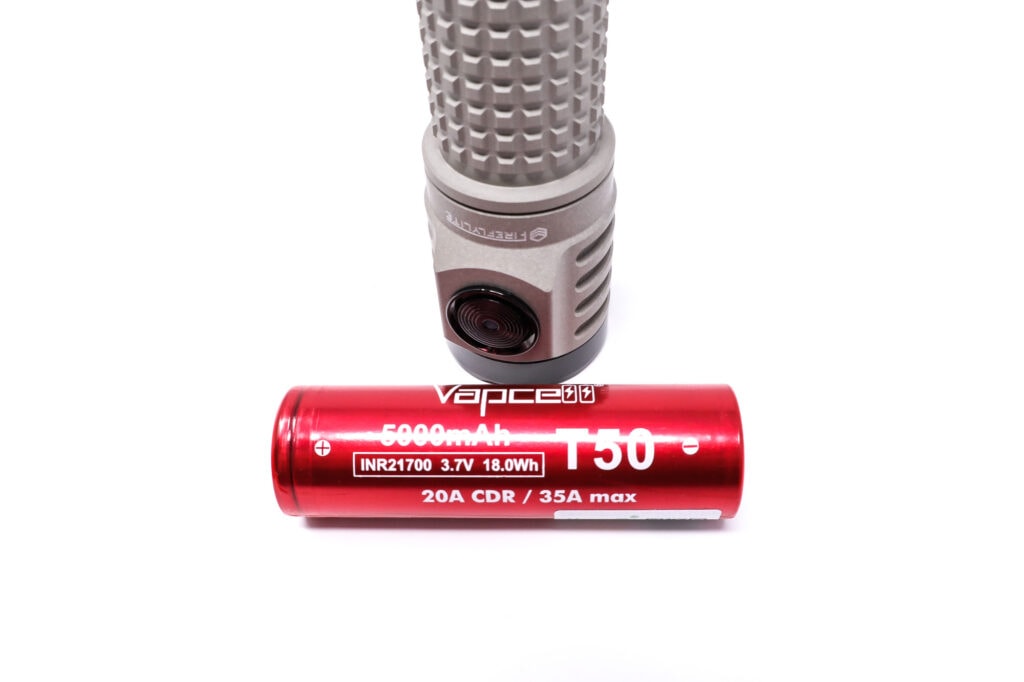
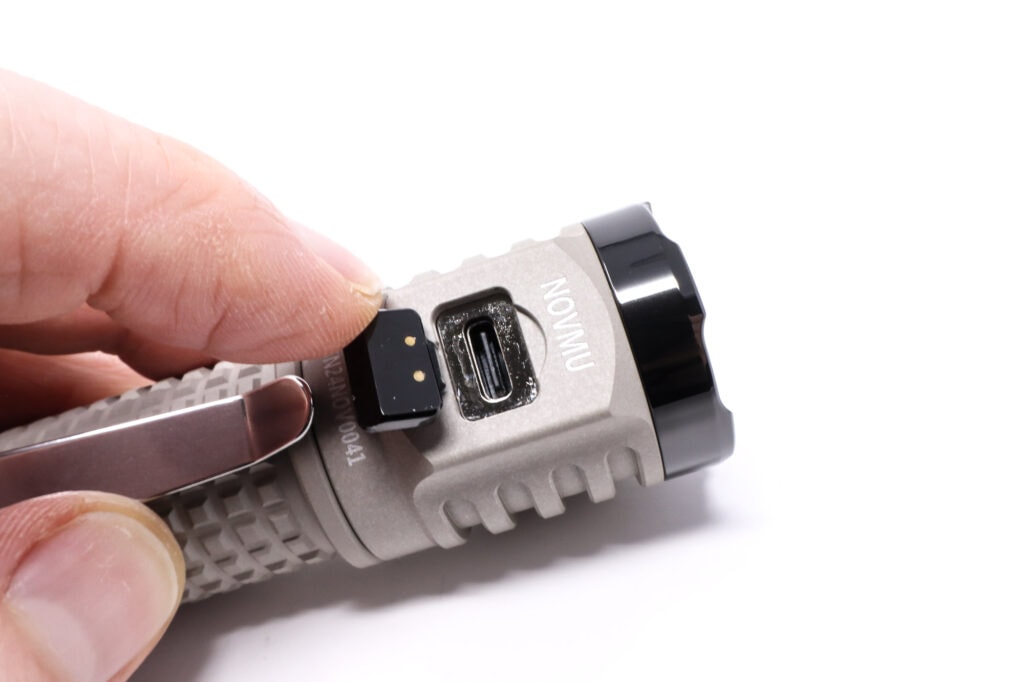
Performance test
Lumen measurements
How Lumens are Measured: Understanding ANSI FL1 Standards How Lumens are Measured: Understanding ANSI FL1 Standards: The ANSI FL1 standards specify that output in lumens should be measured 30 seconds after turning on, as this is the standardized time for measuring brightness according to the industry standard. This is why we focus on this part in our measurements. The ANSI FL1 standards require an ambient temperature of 22 ± 3°C. We record the ambient the ambient temperature to identify potential reasons for any observed discrepancies.Lumens are measured in my 50 cm integrating sphere with a Digi-Sense 20250-00 data logging luxmeter. The sphere has been calibrated with a Convoy S2+ measured to 260 Lumens and the figures are within 10% of actual. I use a Thisinde B18B+ multimeter with 14 gauge wire on banana plugs in the meter for low current and my FY219 clamp meter for higher currents over 200 mA. and tested the stepped modes in the Advanced UI. The thermal ceiling was set to 65 C. I used the included VapCell T50 battery.
| Mode | Amps at start | Specified | 0 sec. | 30 sec. | 10 min. |
|---|---|---|---|---|---|
| L1 | 2.48 mA | ? | N/A | N/A | – |
| L2 | 17.5 mA | ? | 5 | 5 | – |
| L3 | 181 mA | ? | 39 | 39 | – |
| L4 | 630 mA | ? | 360 | 360 | 360 |
| L5 | 1.98 A | ? | 1080 | 1062 | 1008 |
| L6 | 5 A | ? | 2322 | 2277 | 1467 |
| Turbo | 18.61 A | 6,000 | 5490 | 5040 | 1080 |
Ambient temperature during testing:
- 19.6 °C
Parasitic drain:
- AUX LEDs on: 1.4 mA
- AUX LEDs off: 0.1mA
Fireflylite didn’t list specs for the output other than a single 6,000 Lumen figure which I assume is for Turbo.
FireflyLite NOV-Mu V2 Battery Life: Runtime graphs
How Runtimes are Measured: Understanding ANSI FL1 Standards About ANSI FL1 runtime standards: The runtime is measured until the light drops to 10% of its initial output (30 seconds after turning on). This does not mean that the flashlight is not usable anymore. The last column shows how long the light actually works till it shuts off. If there is a + symbol, it means that the test was stopped at that particular point, but the light was actually still running. This happens on certain occasions, with certain drivers, firmware, or batteries.Lumens are measured in my 50 cm integrating sphere with a Digi-Sense 20250-00 data logging luxmeter. The sphere has been calibrated with a Convoy S2+ measured to 260 Lumens and the figures are within 10% of actual. I use a Digi-Sense 20250-92 data logging thermocouple for the temperature measurements. The probe is affixed to the head using kapton tape and uses the same 5 second sampling rate for logging. I tested stepped modes L4, L5, L6 and Turbo in Advanced UI. The thermal limit was set to 65 C for the tests. I used the included VapCell T50 battery.
| Mode | Specified | Runtime (ANSI FL1) | Time till shut off |
|---|---|---|---|
| L4 | ? | 6h 55m | 7h 14m* |
| L5 | ? | 2h 25m | 2h 45m* |
| L6 | ? | 2h 5m | 2h 26m* |
| Turbo | ? | 2h 4m | 2h 10m |
*The light was still running at a very low level when the test was terminated
Fireflylite doesn’t list runtime specs for this light, but like the E07X(s) I tested, we’re getting fully regulated output from all the tested modes, for Turbo, you get very high output for over 30 seconds, which for a small light is really good. The sustained output for Turbo through L5 is around 1000 Lumens for around an hour.
Thermals are on point also, and the light is hand friendly on the higher modes for about 5 minutes before becoming too hot to handle. A lower thermal limit would help here, but wouldn’t do much for sustained output. Like all Anduril lights, the output drops very low for LVP and the light keeps running like that forever, so I ended the tests after the final step down. The light was fully functional after the testing with access to totally usable brightness levels. The battery read 2.9 to 2.8 volts after each test.
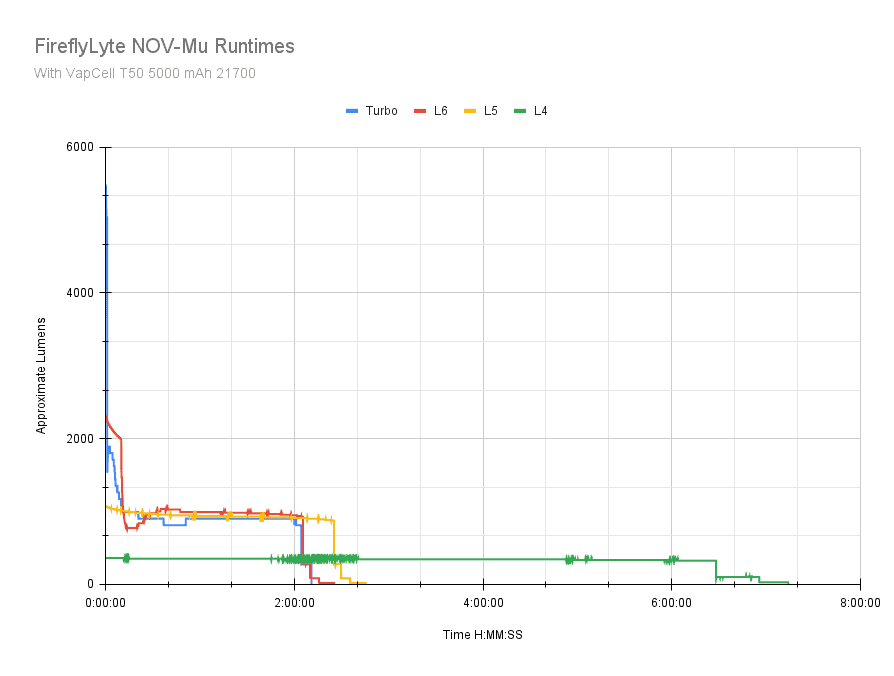
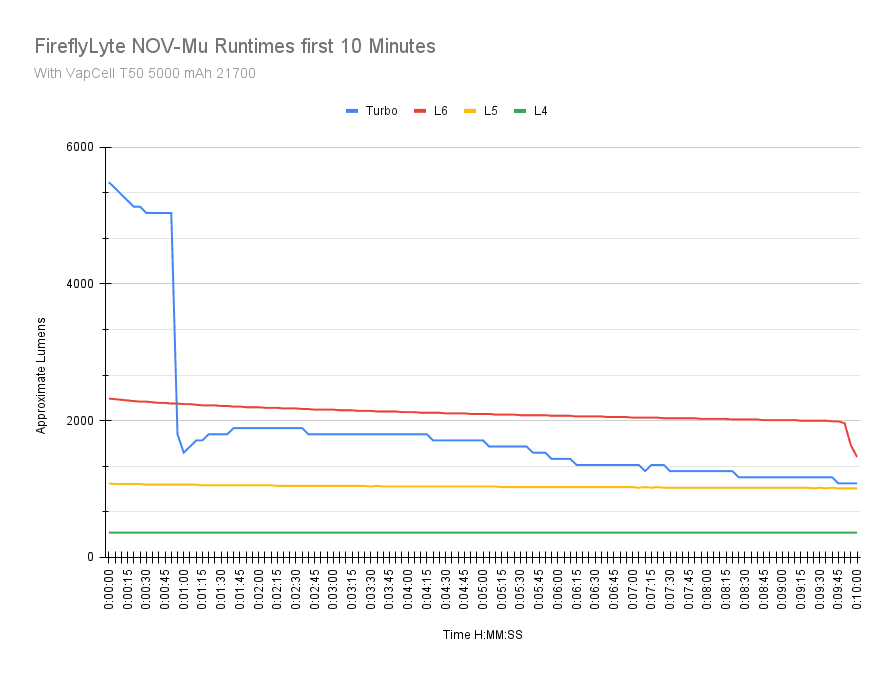
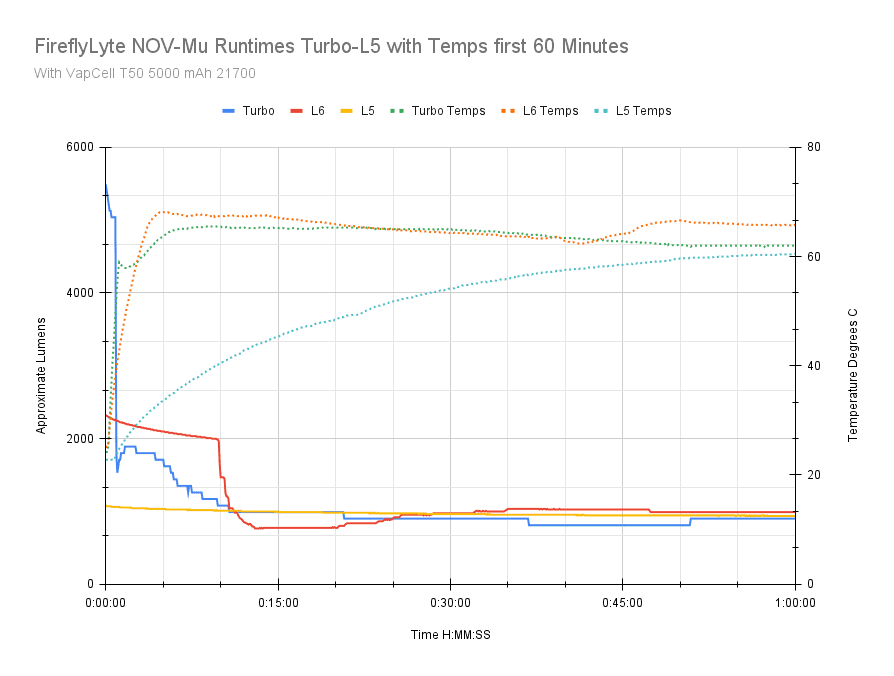
For the comparison graphs, I compared the PL09MU (which also has Nichia E21a’s, just 50% less) and the PL47MU, a PL47G2 without an optic. It has FA4 binned SST20s, which produce similar rosy tints at high CRI, but I think the NOV-Mu has a bit nicer tint. Note that the PL09 and PL47 have unregulated drivers and don’t maintain output like the NOV-Mu.
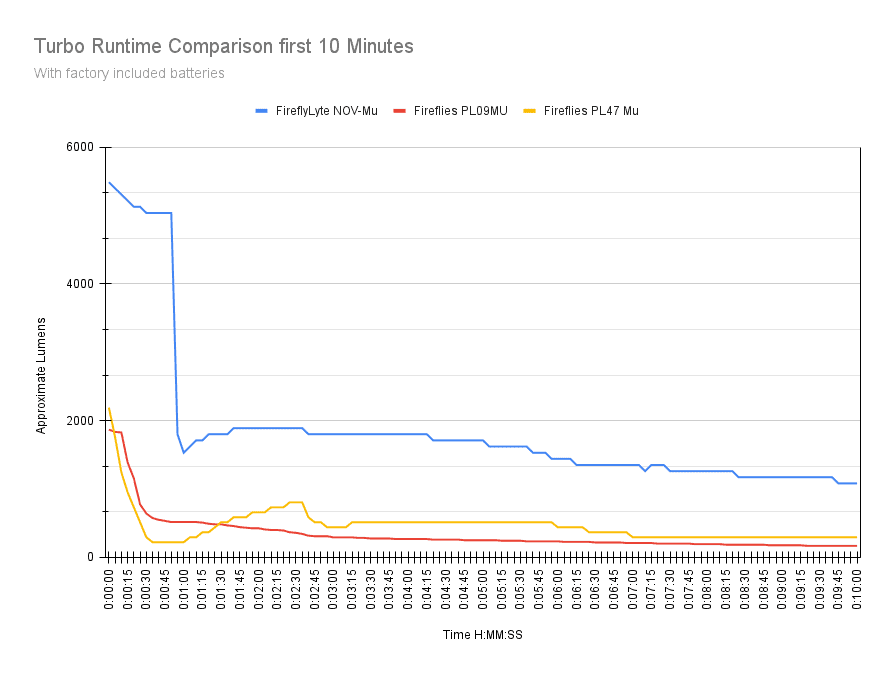
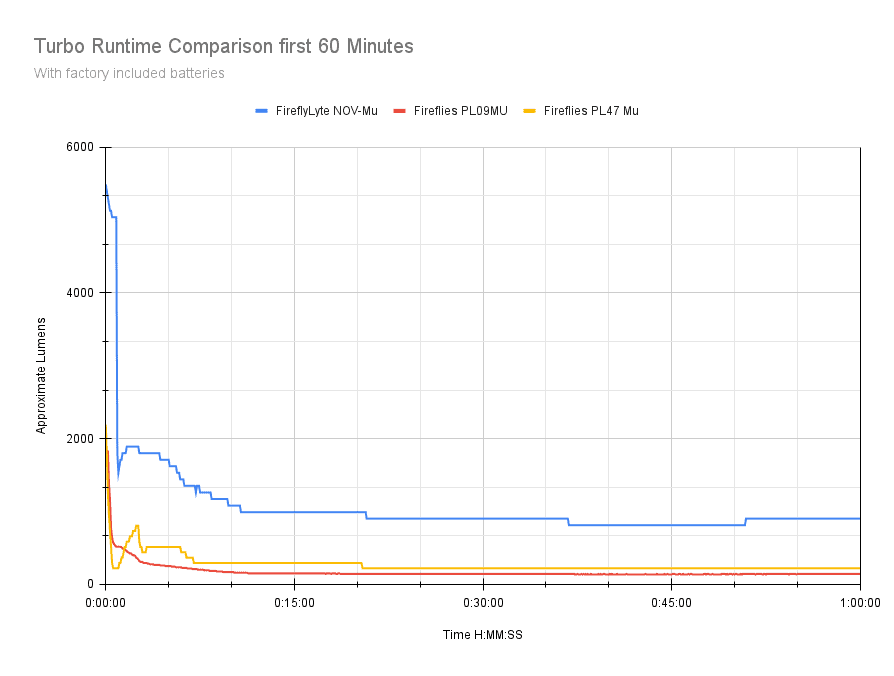
Peak beam intensity and beam distance measurements
About Peak beam intensity: Understanding ANSI FL1 Standards About peak beam intensity The calculated value of distance in meters at which the flashlight produces a light intensity of 0.25 lux. (0.25 lux is about the brightness of a full moon shining on an object). This means that the intensity has decreased so much, it becomes difficult to see darker objects, or objects that don’t reflect light. The columns ‘Meters’ and ‘Yards’ use rounded numbers.Beam distances are measured using a Uni-T UT383S luxmeter measured indoors at 5 meters using the included fully charged battery. Measurements taken at 30 seconds. The battery was topped off and the light allowed to cool between the L6 and Turbo measurements.
| Mode | Specified | Candela measured | Meters | Yards |
|---|---|---|---|---|
| L1 | ? | N/A | N/A | N/A |
| L2 | ? | N/A | N/A | N/A |
| L3 | ? | 75 | 17 | 18 |
| L4 | ? | 175 | 26 | 28 |
| L5 | ? | 500 | 45 | 49 |
| L6 | ? | 1075 | 65 | 71 |
| Turbo | ? | 3025 | 110 | 120 |
Ambient temperature:
- 19.5 °C
Obviously, this isn’t a throwy light, and it’s not meant to be. It is a flood machine for area lighting, and it’s great at it!
Beamshots
Camera settings and distance: Photos taken with a Canon EOS R100 and Canon R-FS 18-45mm STM lens set to 0.3s, f5 ISO 1600 and 5000K WB. The fence is 95 meters away. The trees beyond the fence are about 150 meters distant.
Beamshots of the following flashlights compared:
- FireflyLite NOV-Mu V2
- Fireflies PL09MU
- Fireflies PL47G2 Mu (mule)
- Fireflies PL47g2
Please note that the following beamshots are mainly intended to showcase the beam pattern and beam quality, rather than overall performance. These images are typically taken directly after activation, and in different seasons or weather conditions, and therefore do not fully represent its overall performance. For accurate performance metrics, such as output, beam distance, and runtimes, you need to look at the performance section of this review.
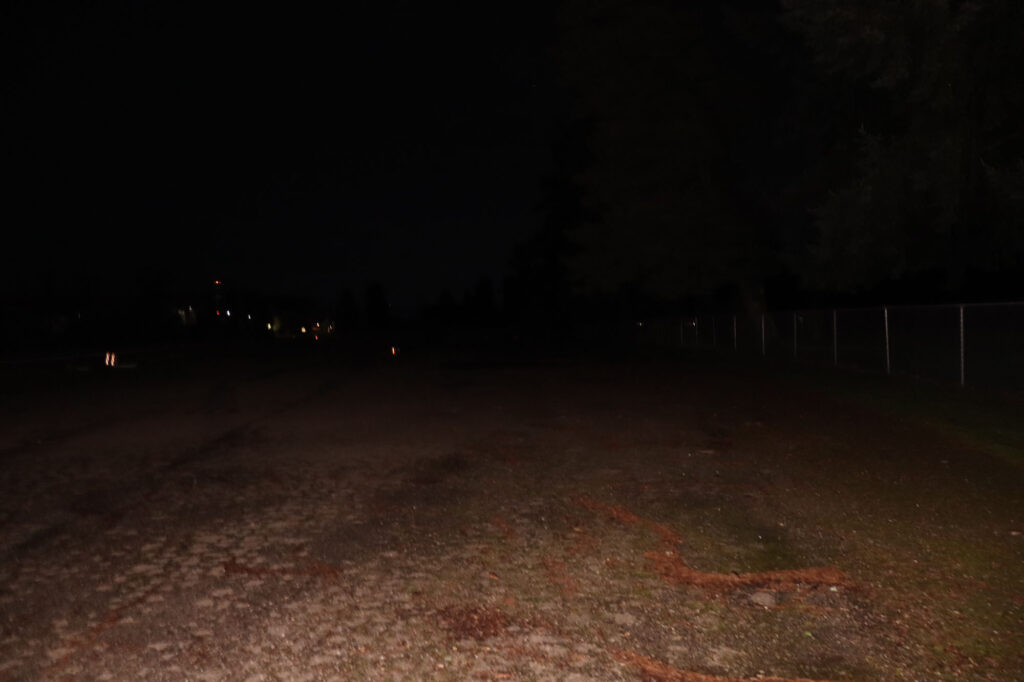
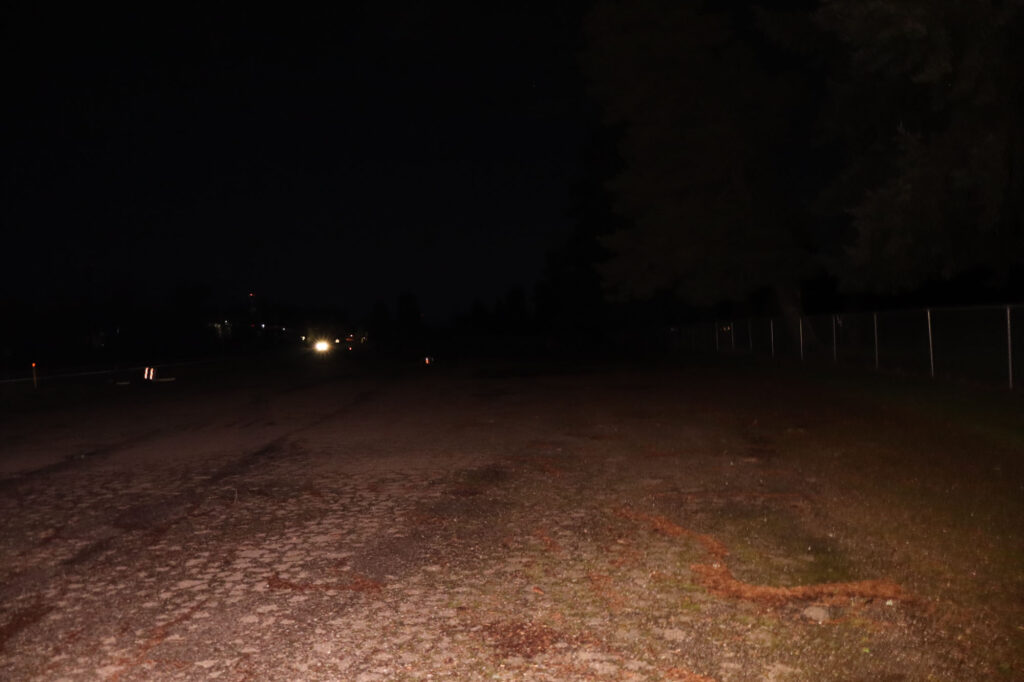
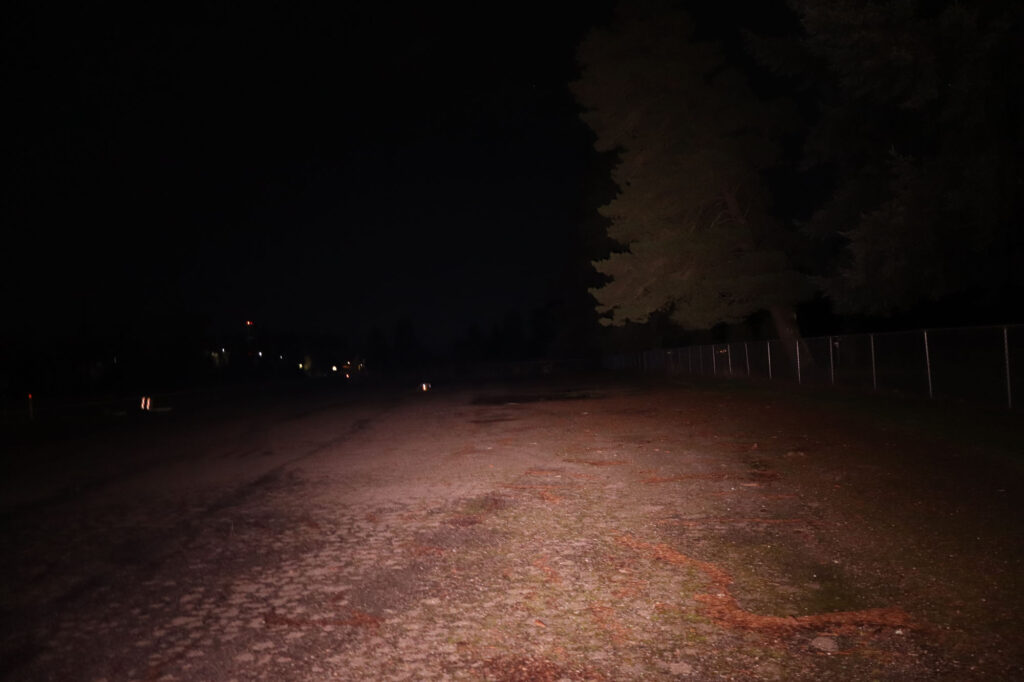
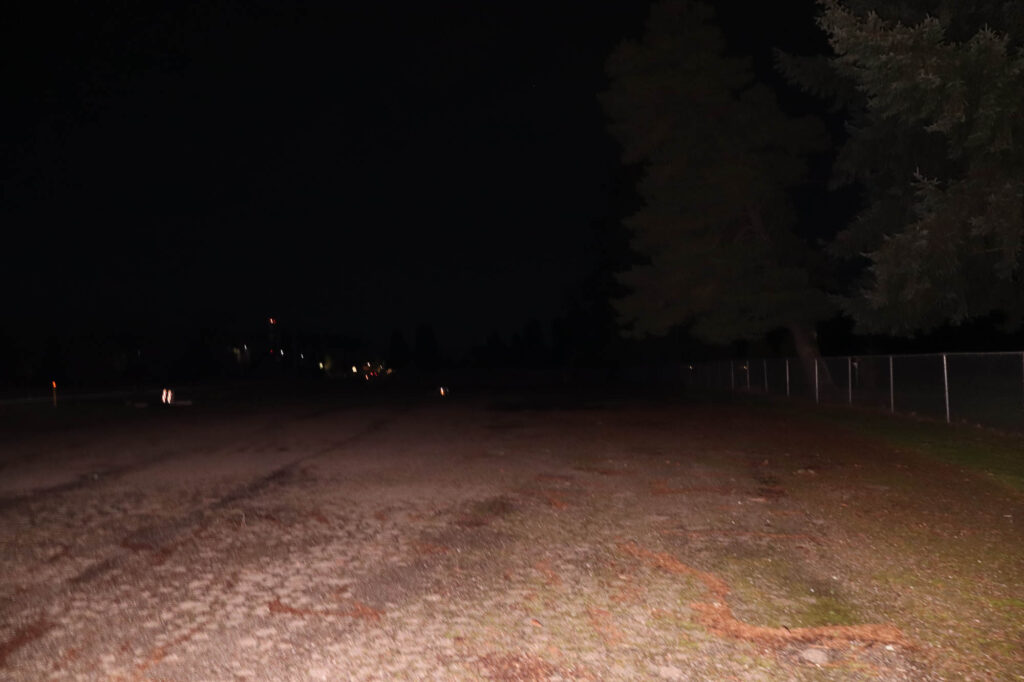
Disclaimer: This flashlight was sent to us for review at no cost by FireflyLite. We have not been paid to review, nor have we been holding back on problems or defects.
Final Verdict
Pros
- Great build quality, fit and finish
- Onboard charging
- Beautiful tint and beam
- Fully regulated driver
- High output
- Very versatile
Cons
- Tailcap and head are really hard to tighten (bone dry o-rings)
- No lanyard mounting point on the light
Explanation on star ratings:
1: Avoid: a match would be a better choice – 2: Poor: significant defect or issues; almost unusable – 3: Average: some defects or issues; but still usable 4: Good: recommended (minor issues) – 5: Great: highly recommended

5 stars: ★★★★★
While our star rating provides a reliable indicator, we encourage you to read the full review to make an informed decision based on your own needs and preferences.
I didn’t have the privilege to test the first NOV-Mu, so I can’t say whether this new one is better or worse than that light, but that’s neither here or there. What FireflyLite has delivered is a highly versatile, surprisingly high performance lighting tool.
While mules occupy a quiet part of the flashlight market and are outnumbered 10 to 1 by their reflector or TIR counterparts, I think the NOV-Mu bridges the gap a bit between them since it can do a lot. No, it won’t go head to head with the X1S or even E07X for beam distance, but for everyday stuff, like walks, or utility work, thanks to the high luminous output, it’s great.
The beam is amazing and the high CRI is great at color matching and reproduction. Stick a diffuser on it, and it’s a handy-dandy lantern or bedside lamp. Opt for the magnetic tailcap, and the versatility factor goes up a lot. There’s not much I didn’t like about this one, other than the excessive effort to tighten down the tailcap and head to the tube, and Anduril 2…well, it’s Anduril 2 and let’s leave it there.
I really miss there not being a lanyard mounting point also. The improvements over the PL09MU are considerable, and I think it’s worth the price premium to have a really high CRI utility light with a fully regulated driver.
You better believe I’ll be using this thing around the house and camping from now on (sorry PL09MU, you’re fired). Well done FireflyLite. 5 stars for the NOV-Mu V2.
Buy your FireflyLite NOV-Mu V2 with a discount
Get 10% off at Firefly Outdoor store, using our exclusive discount code: 1lumen
1lumen selects and reviews products personally. We may earn affiliate commissions through our links, which help support our testing.